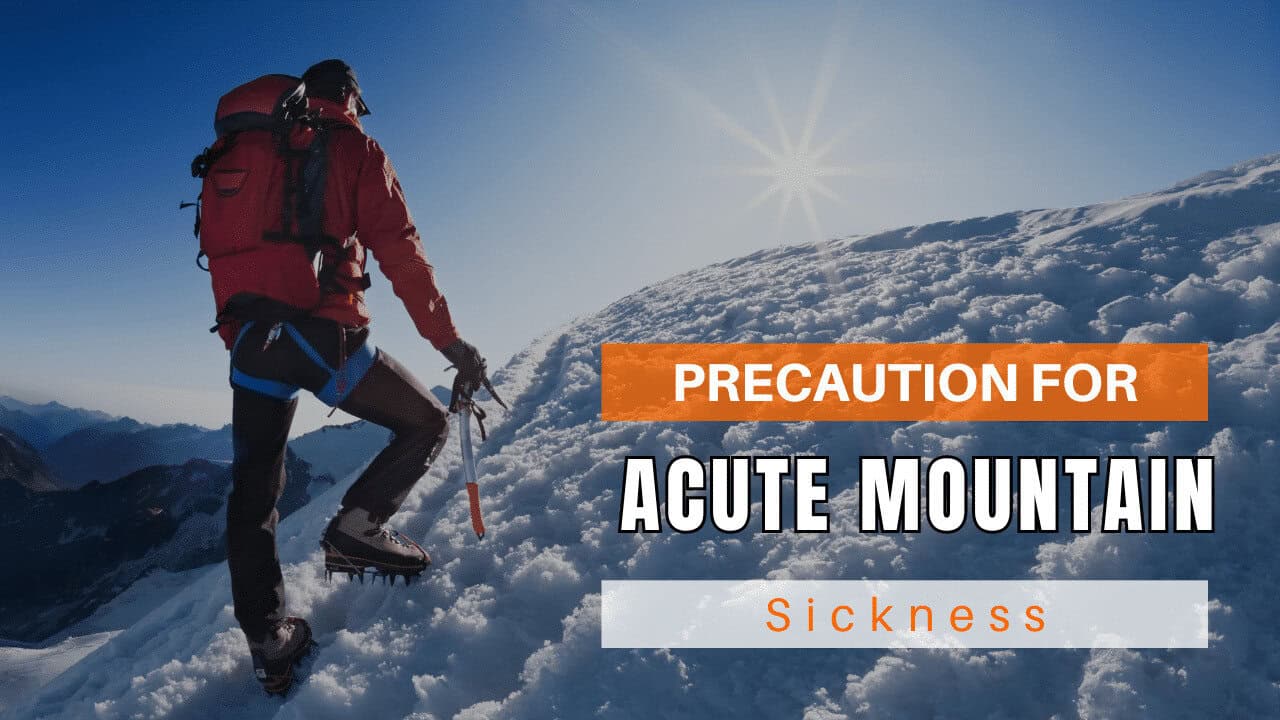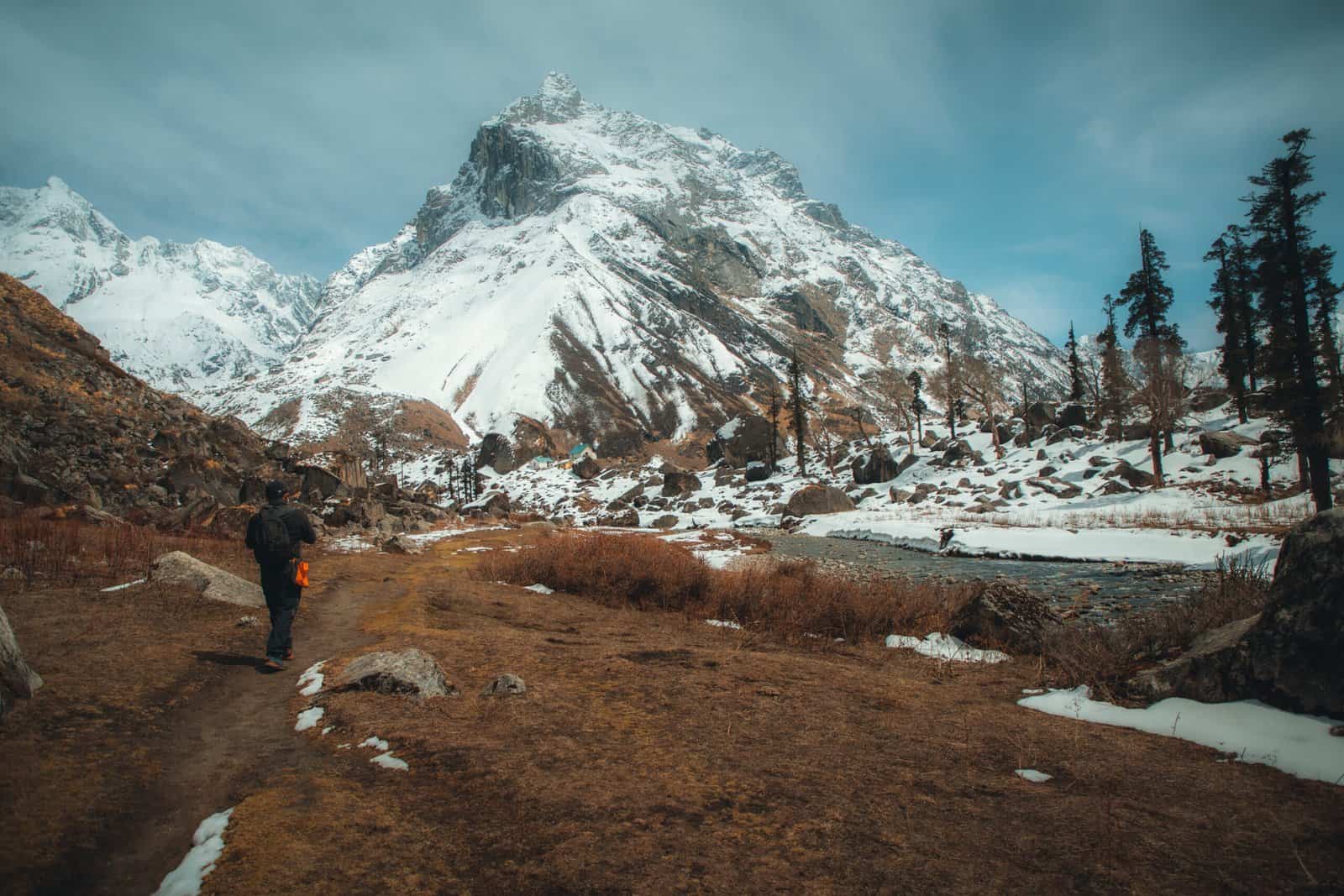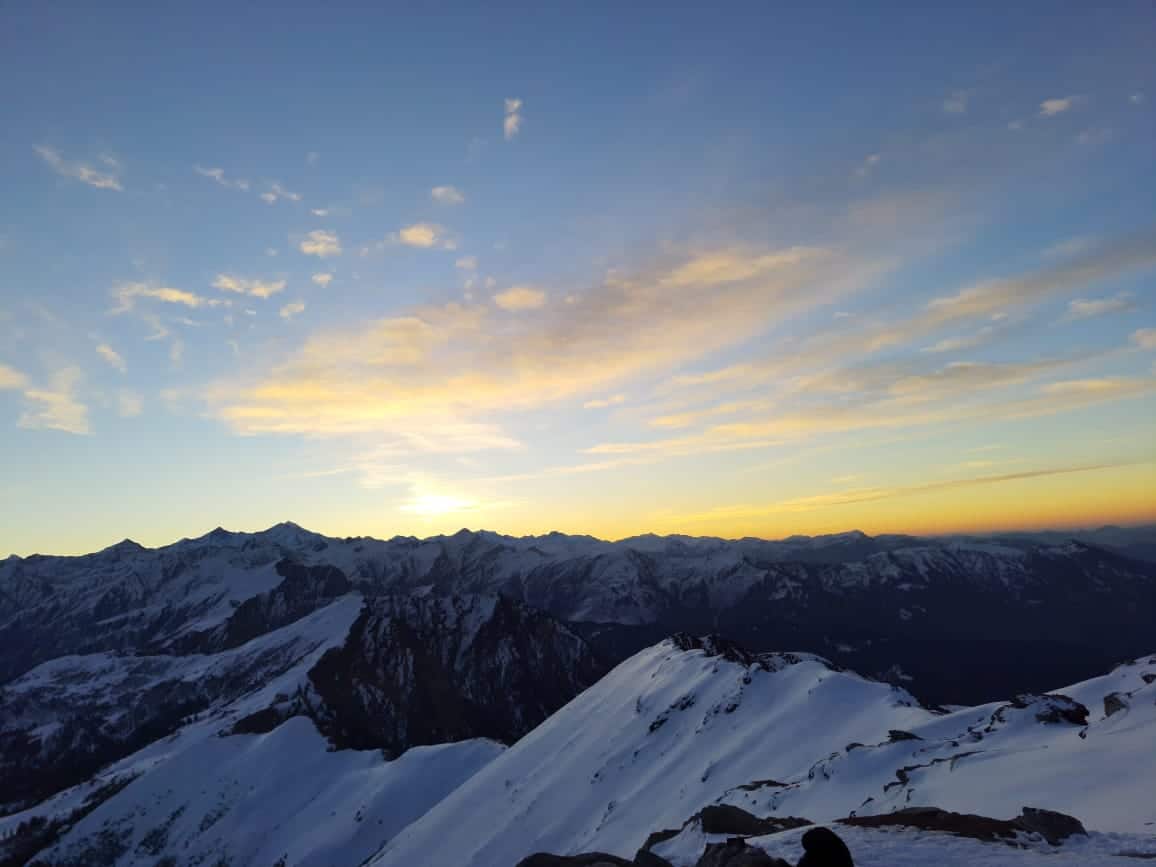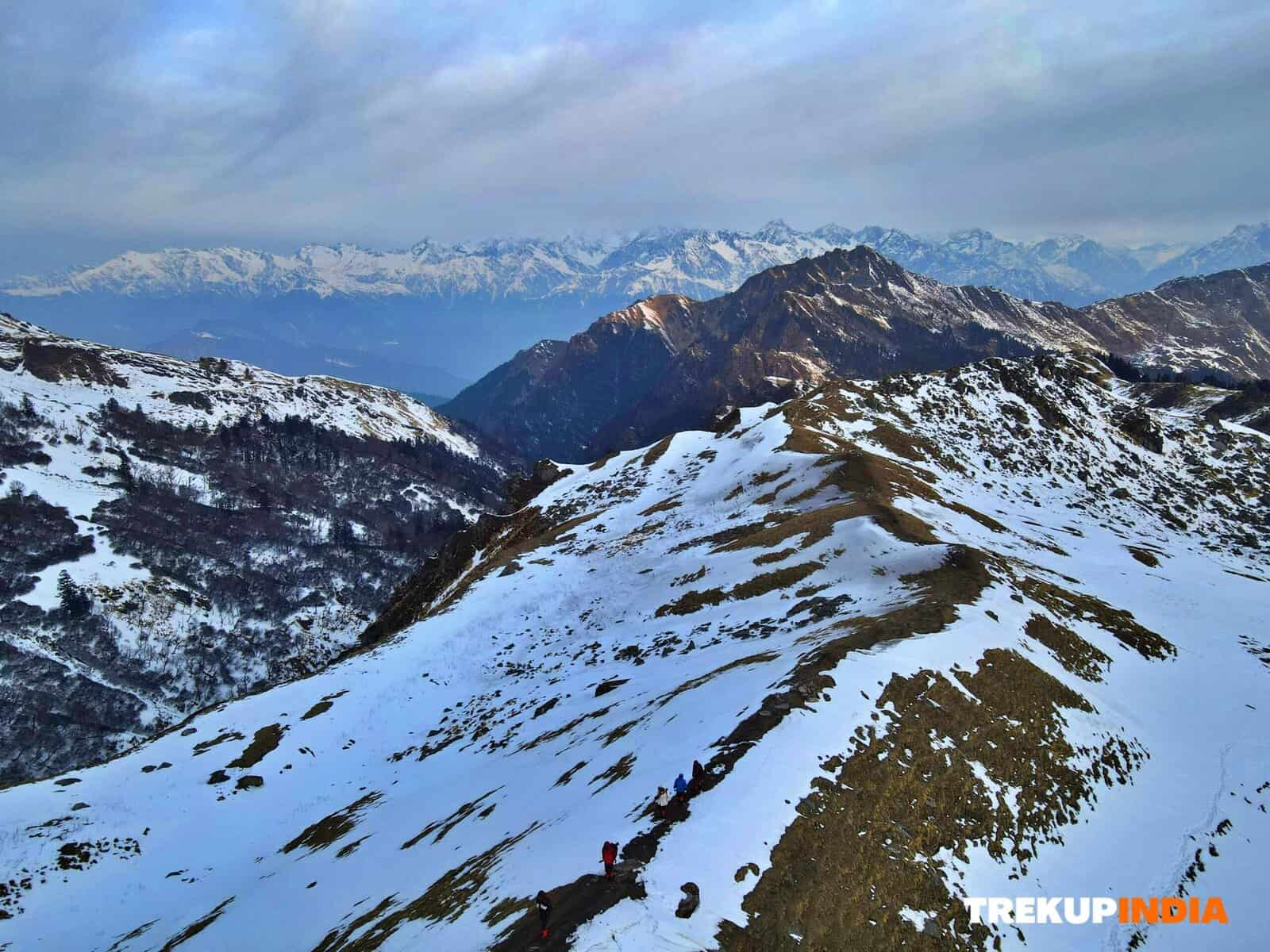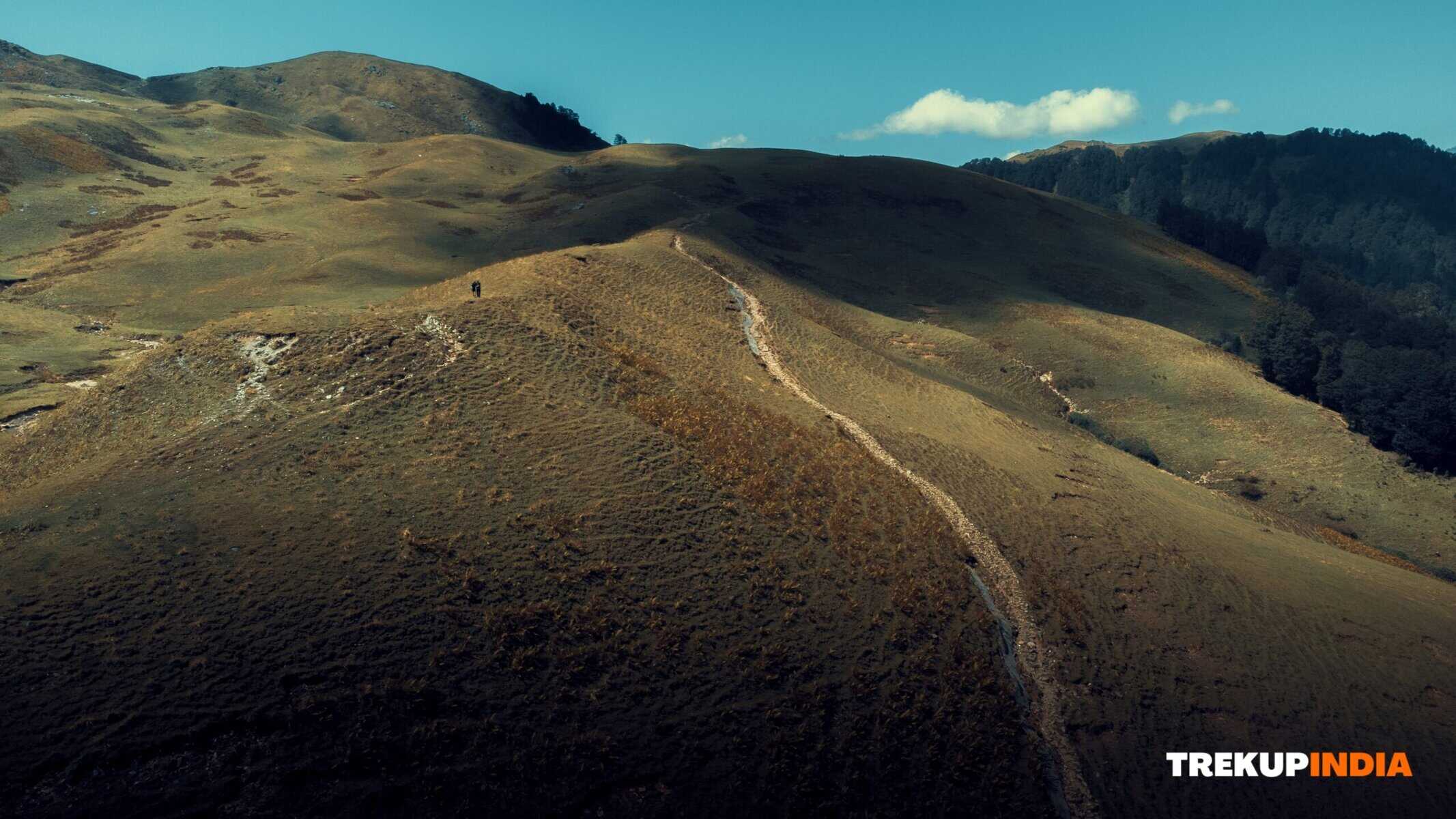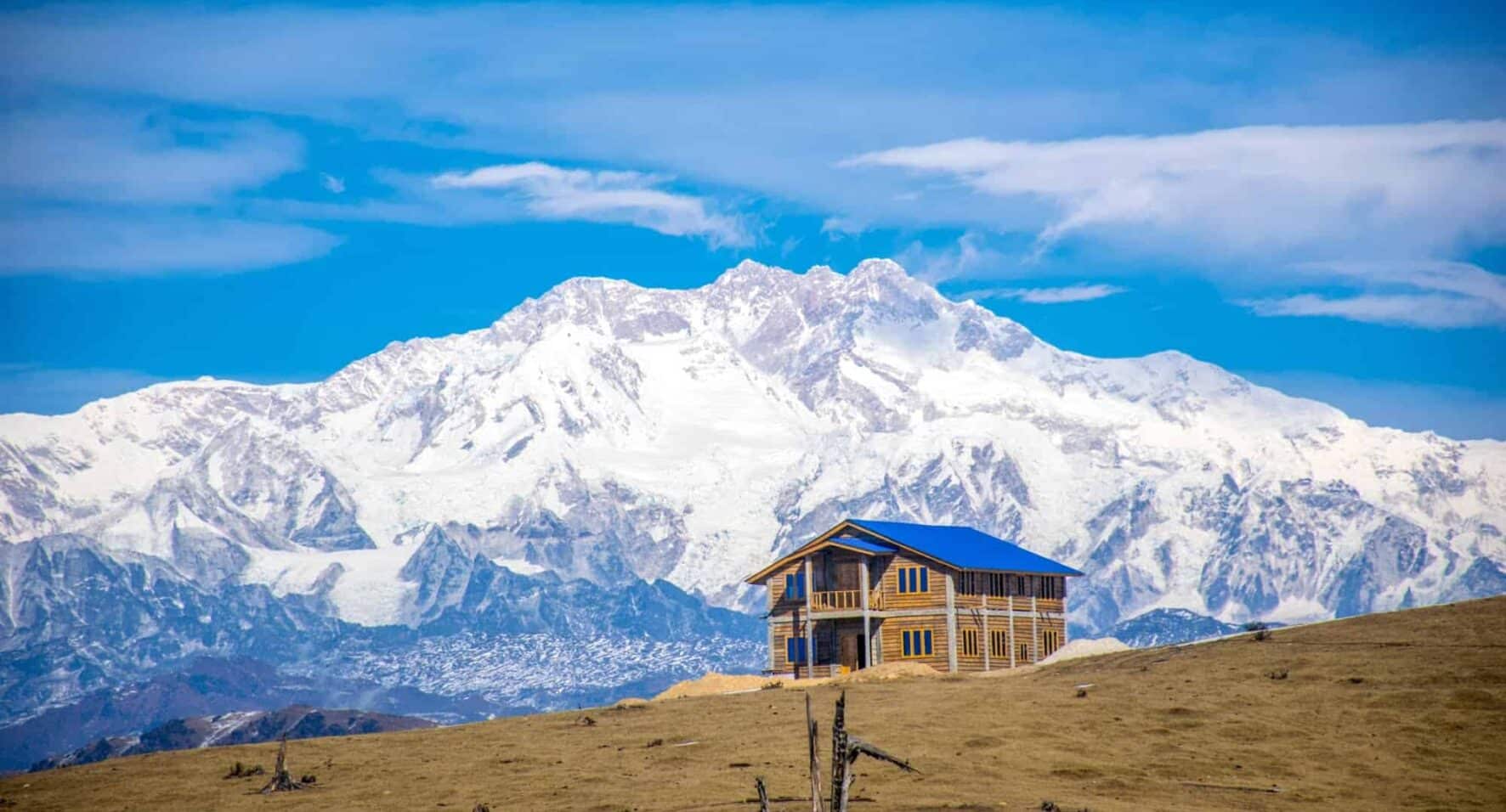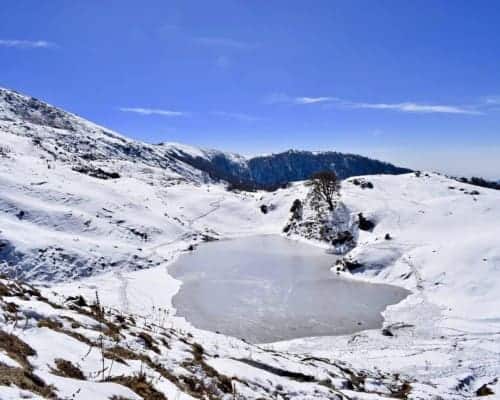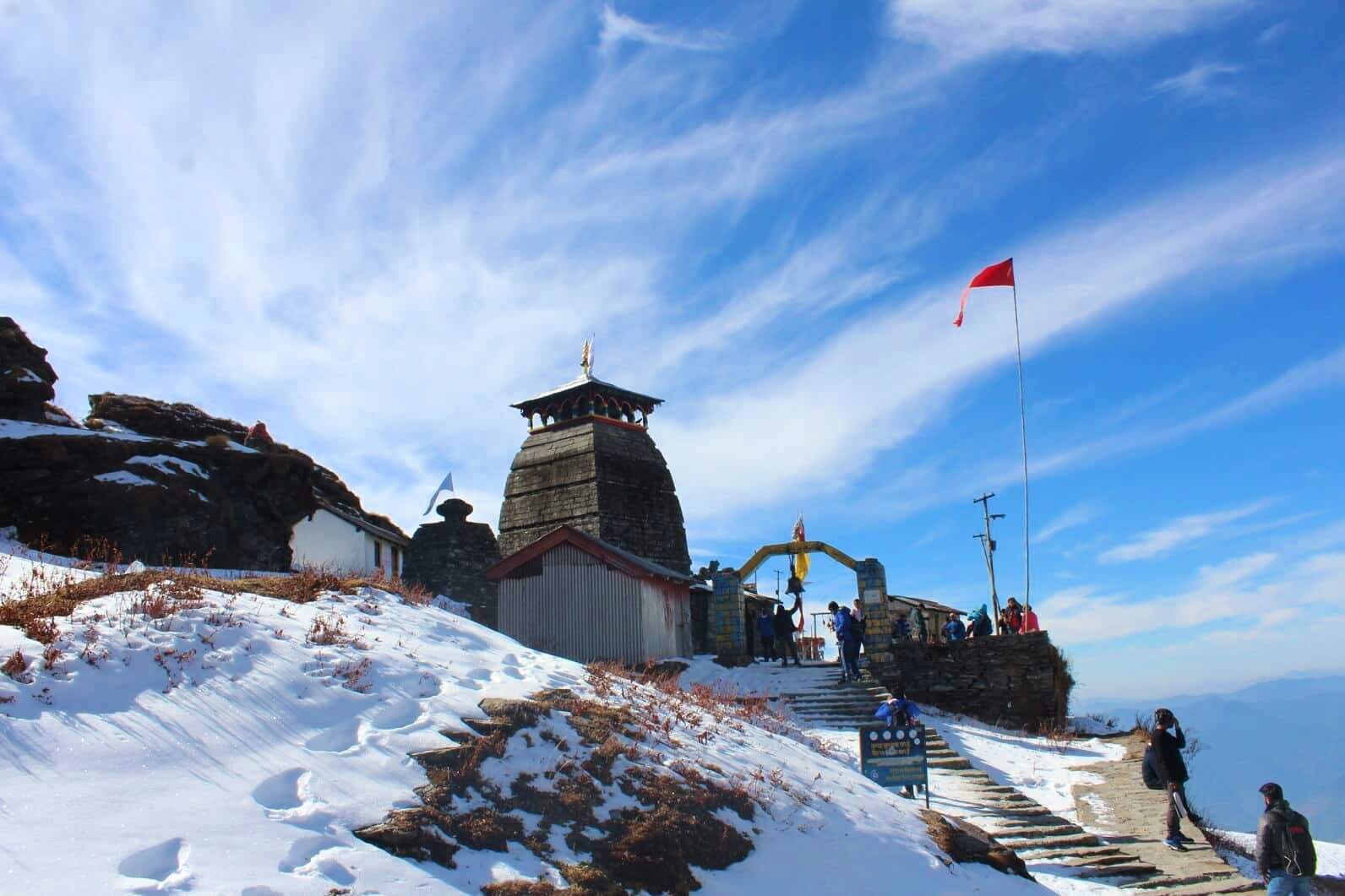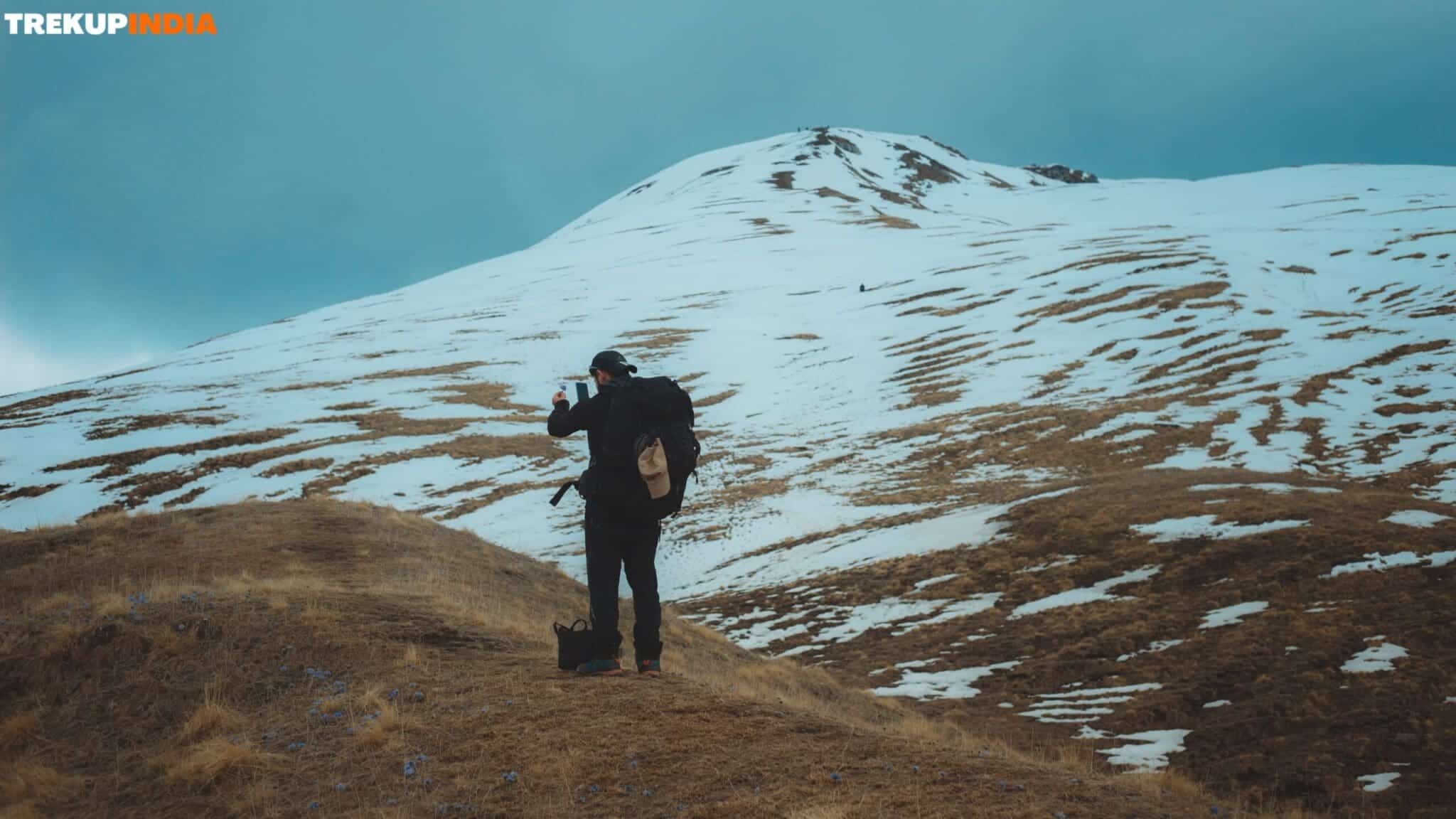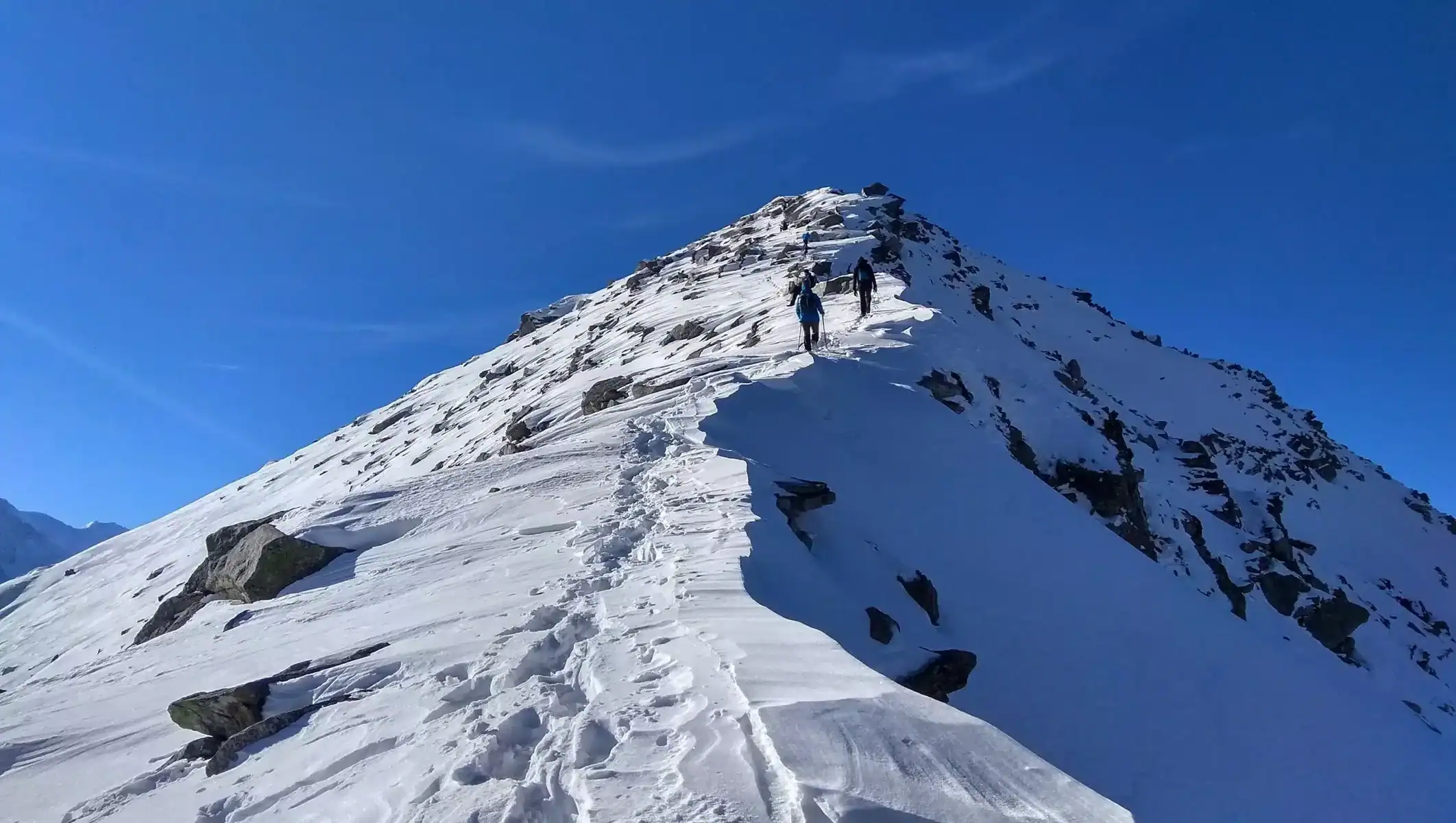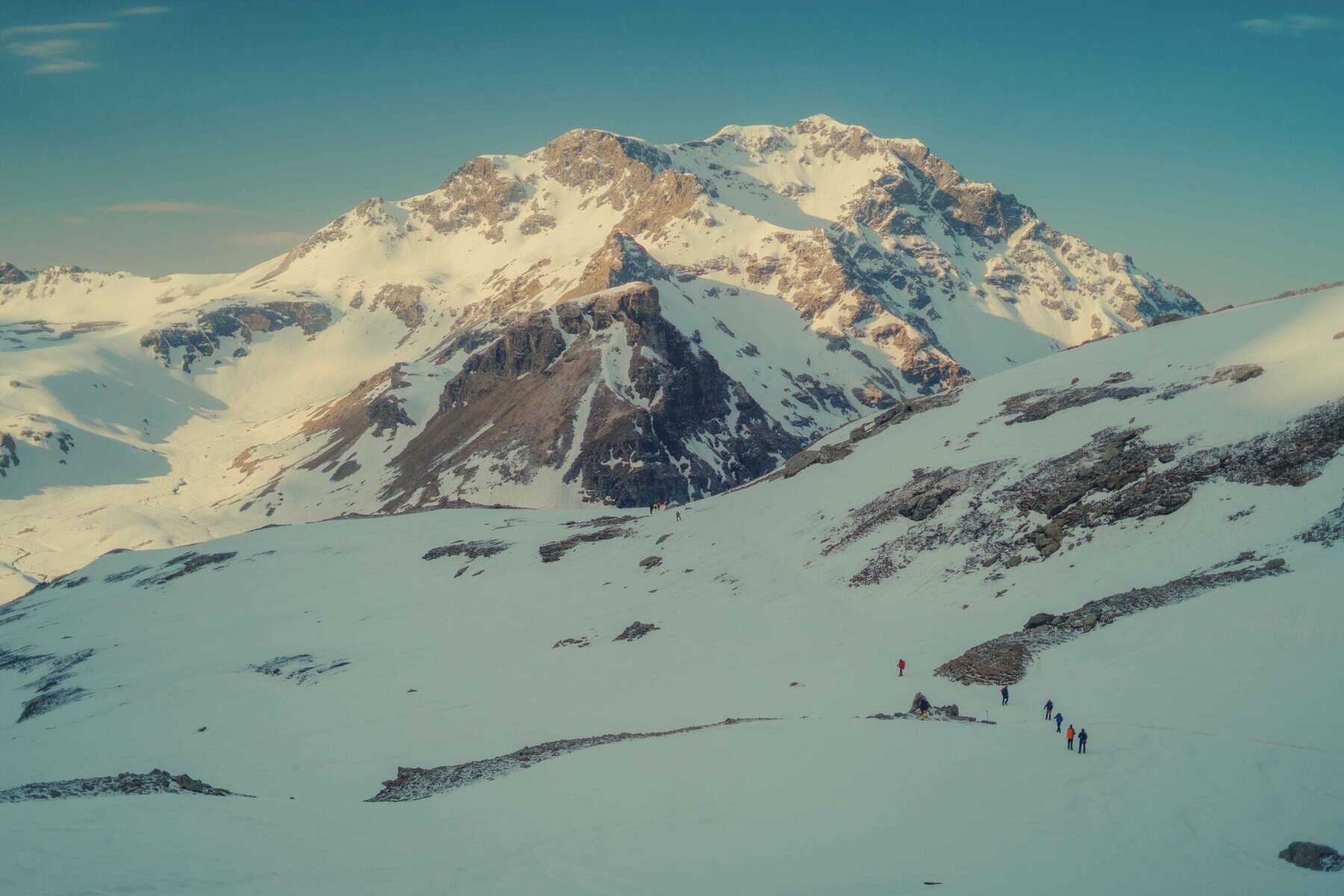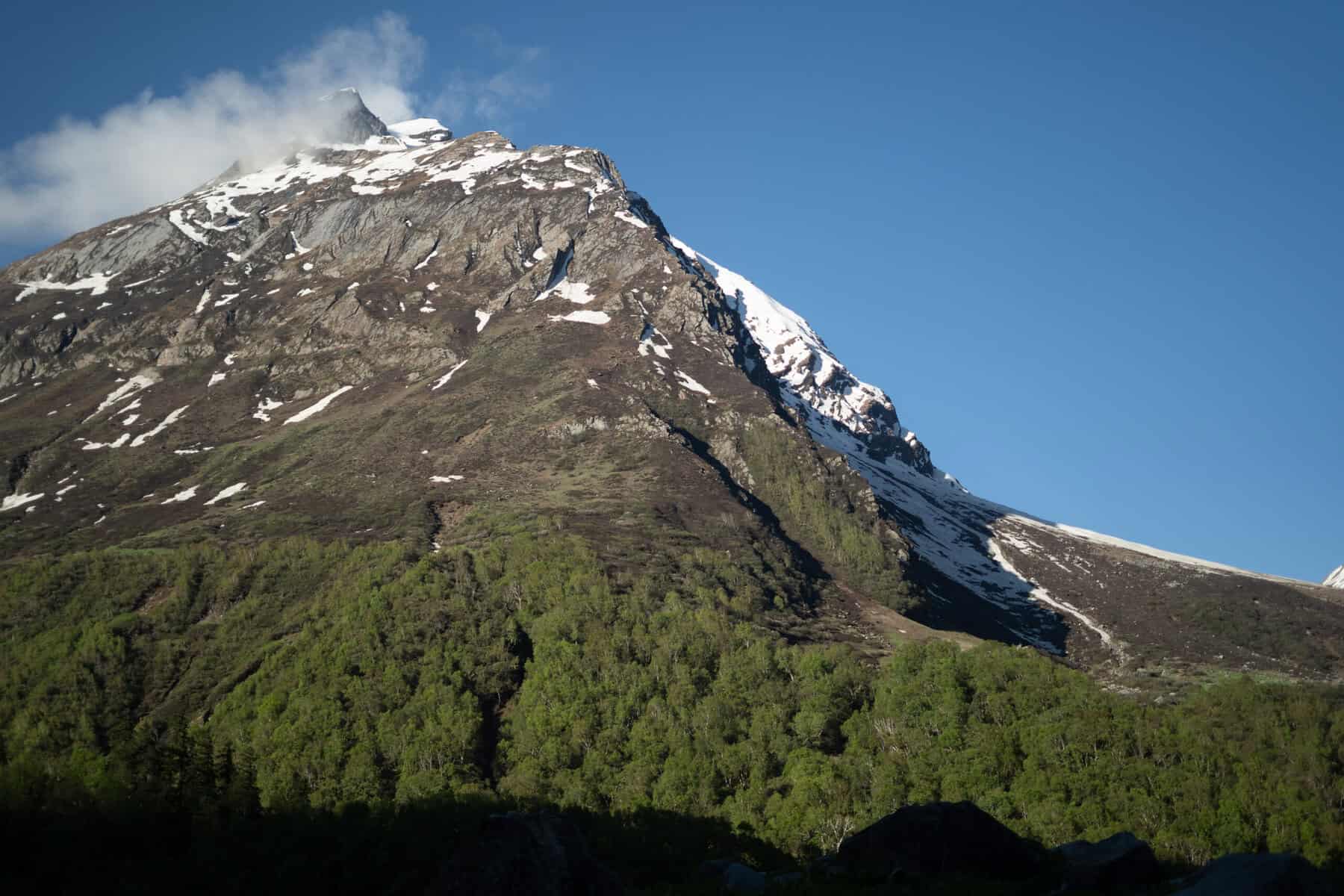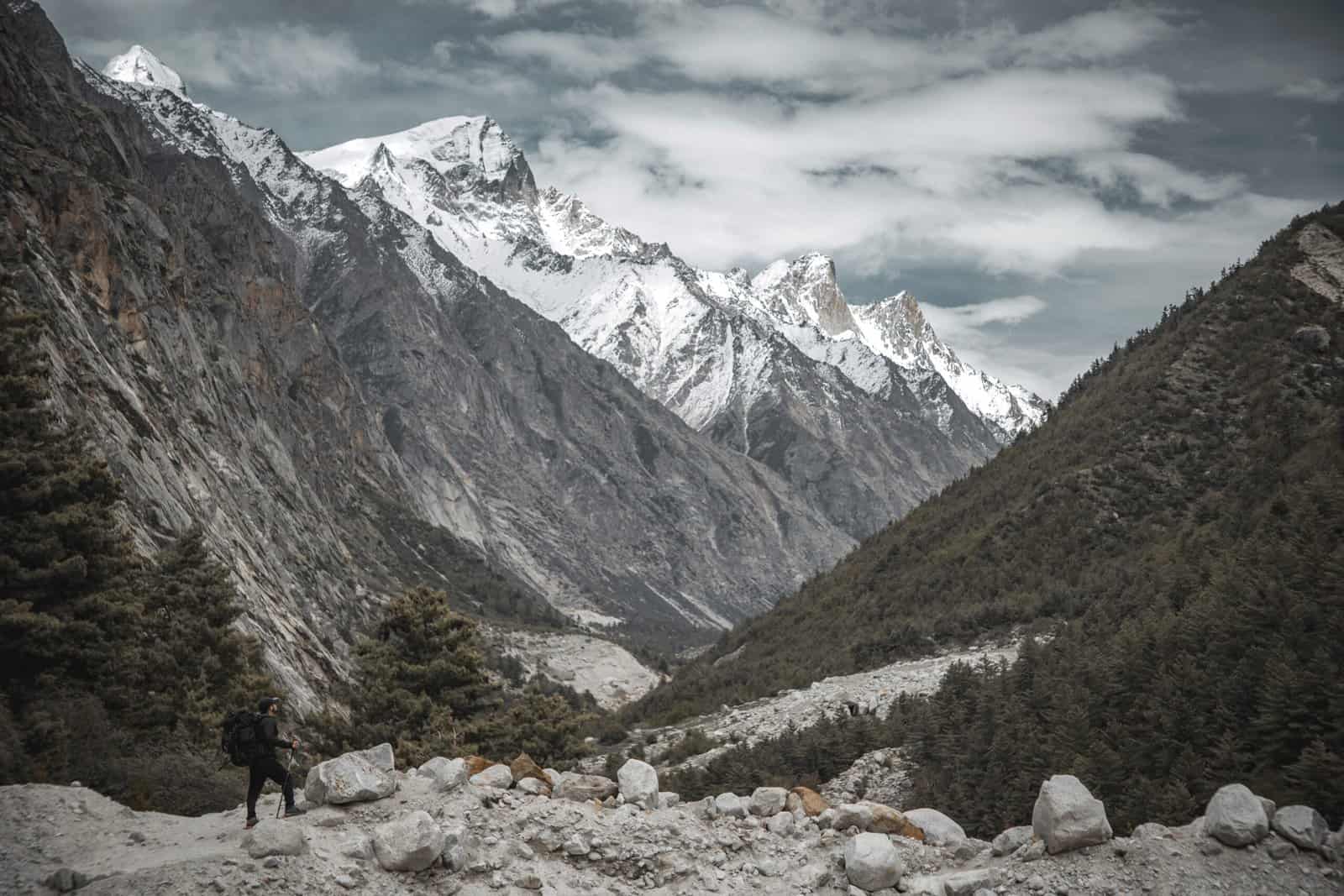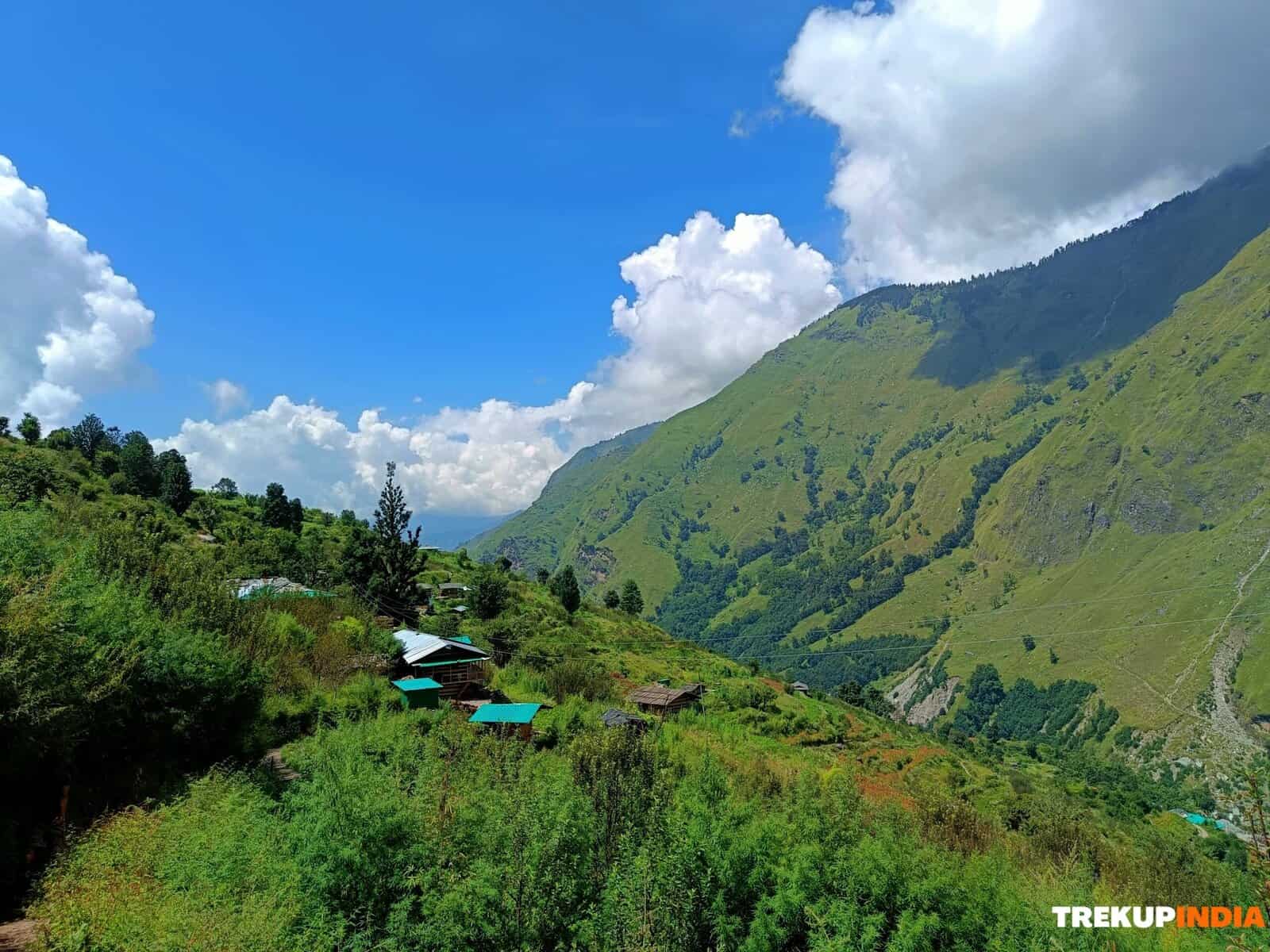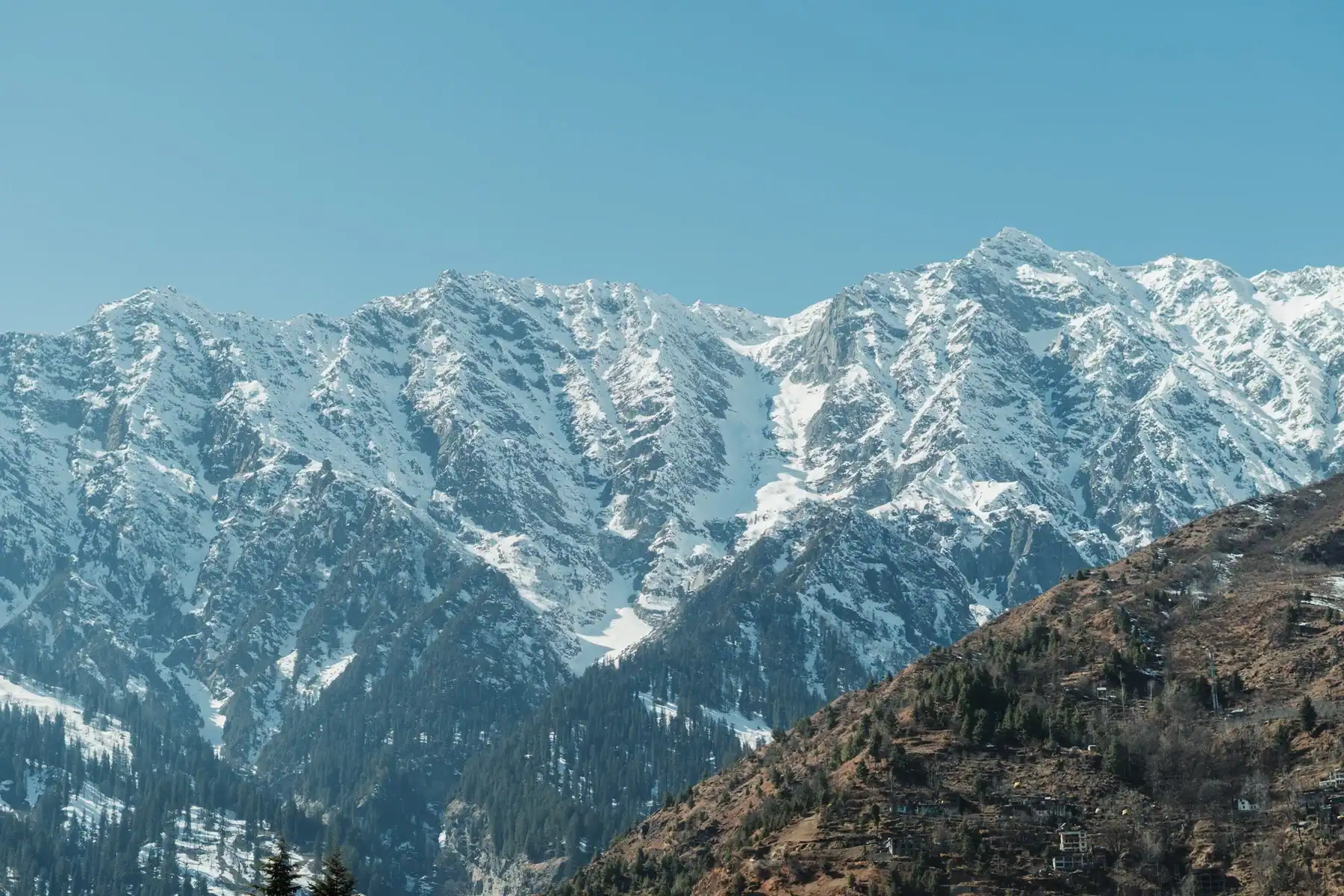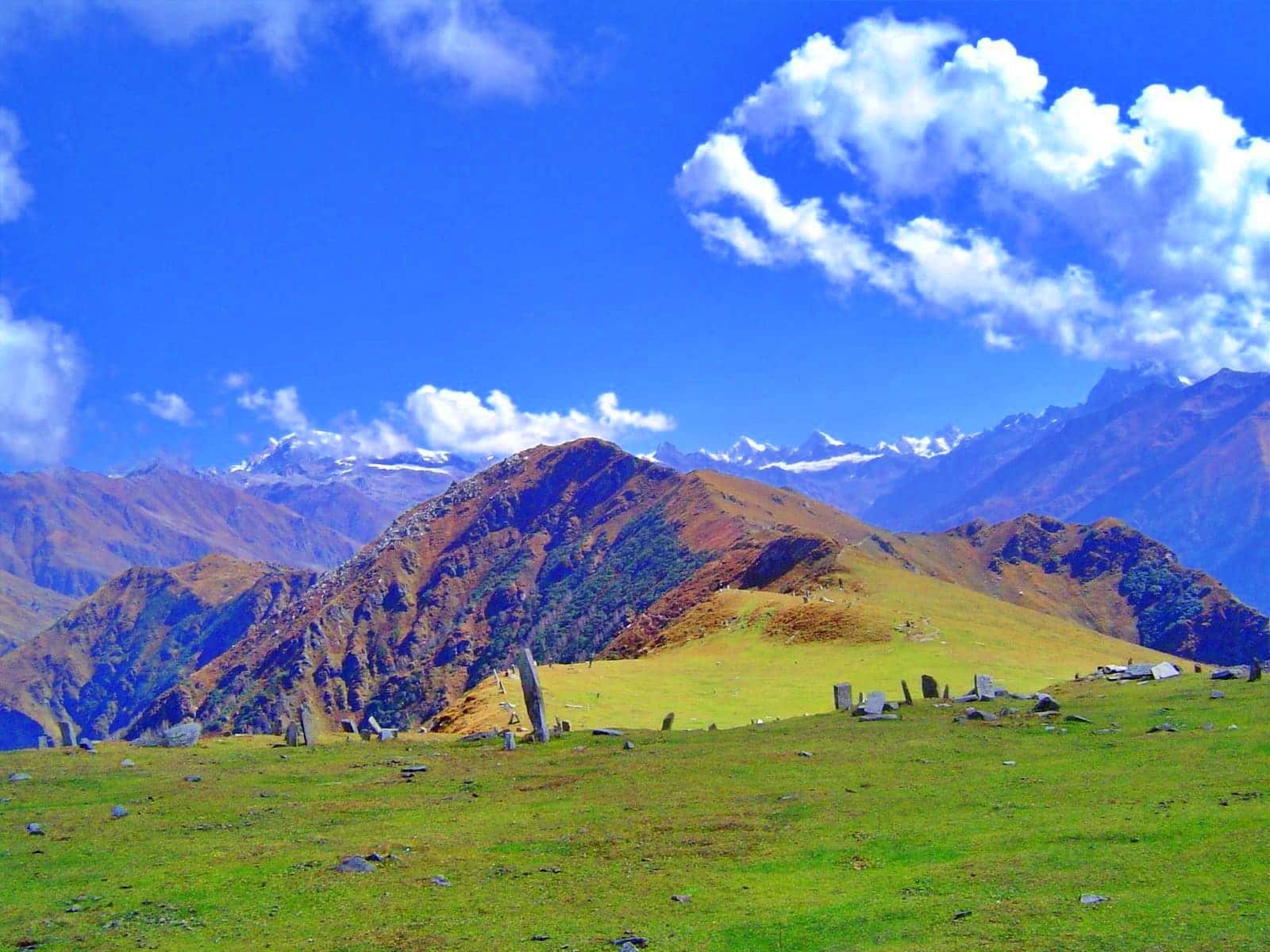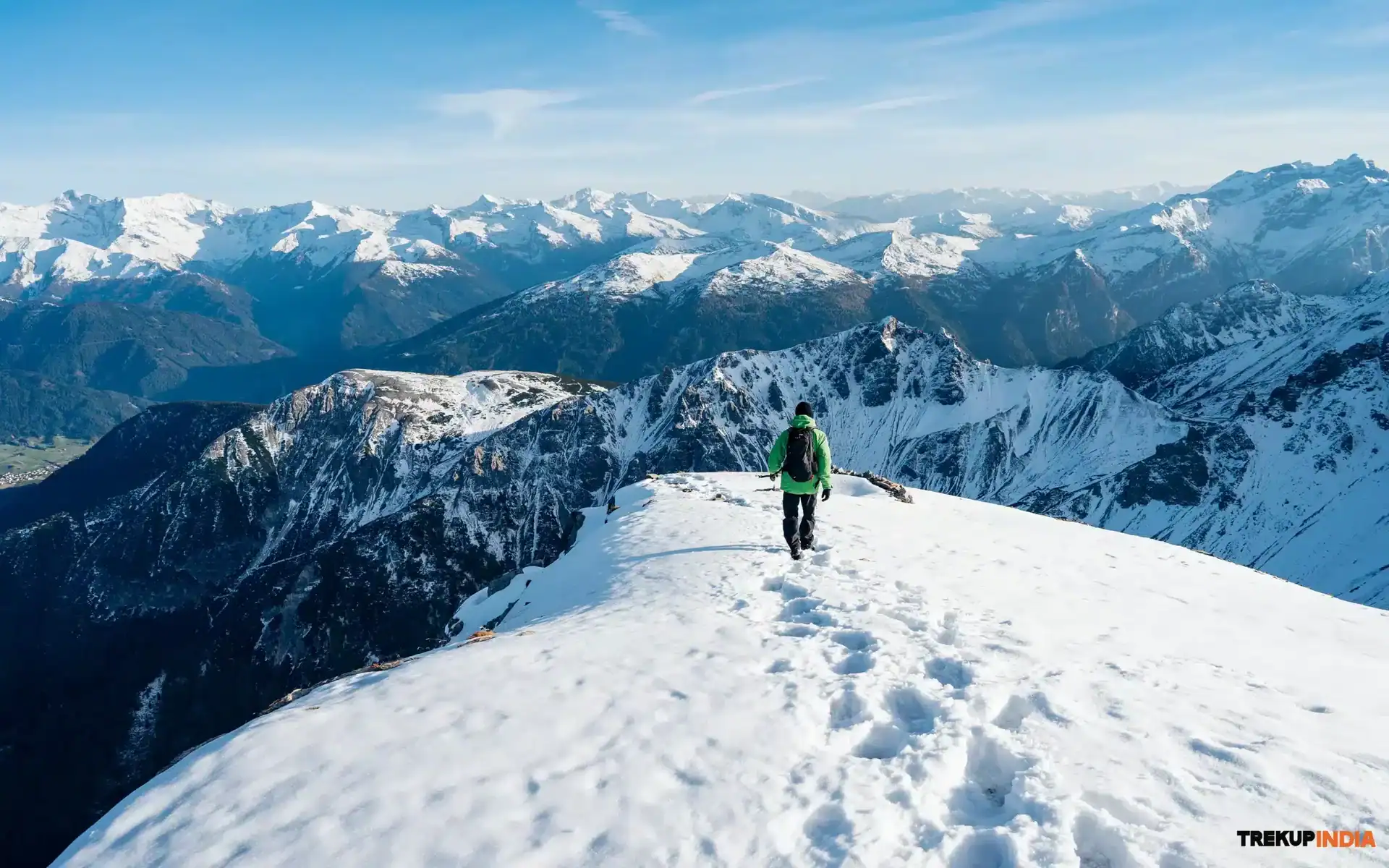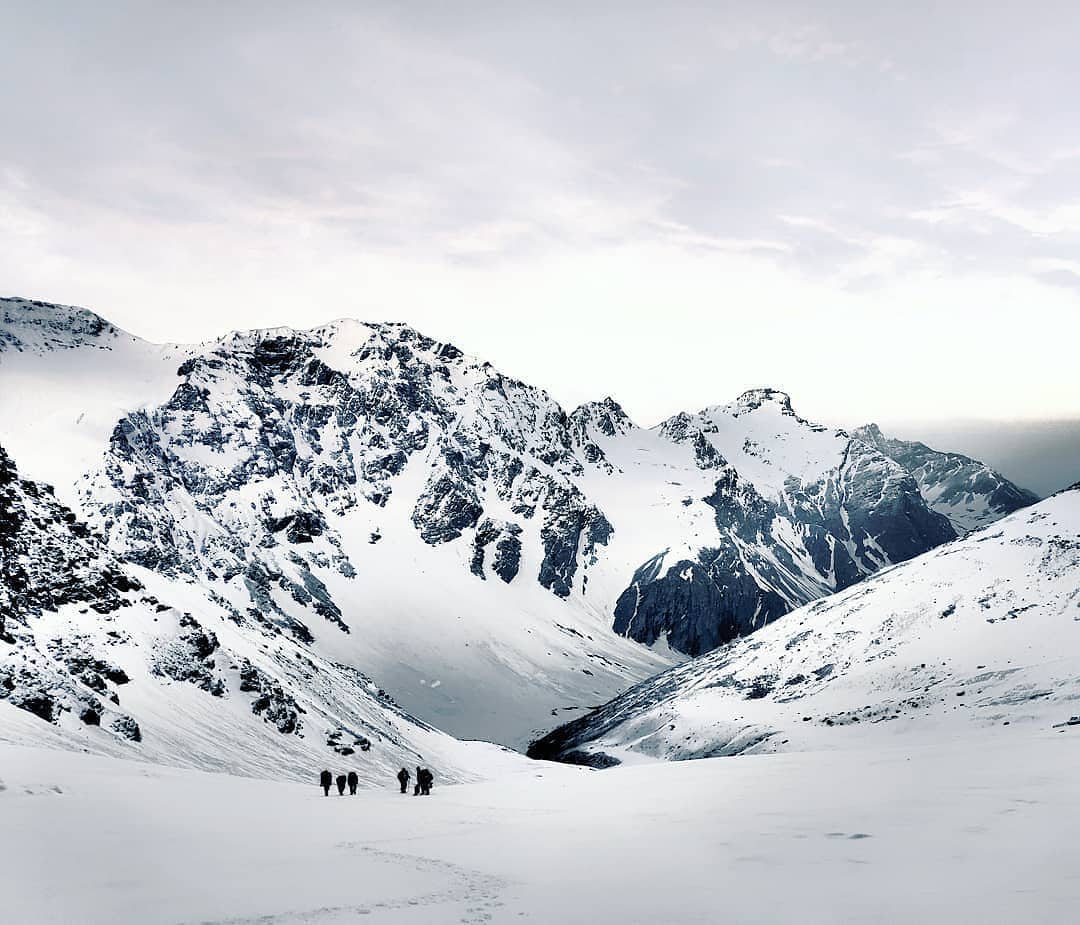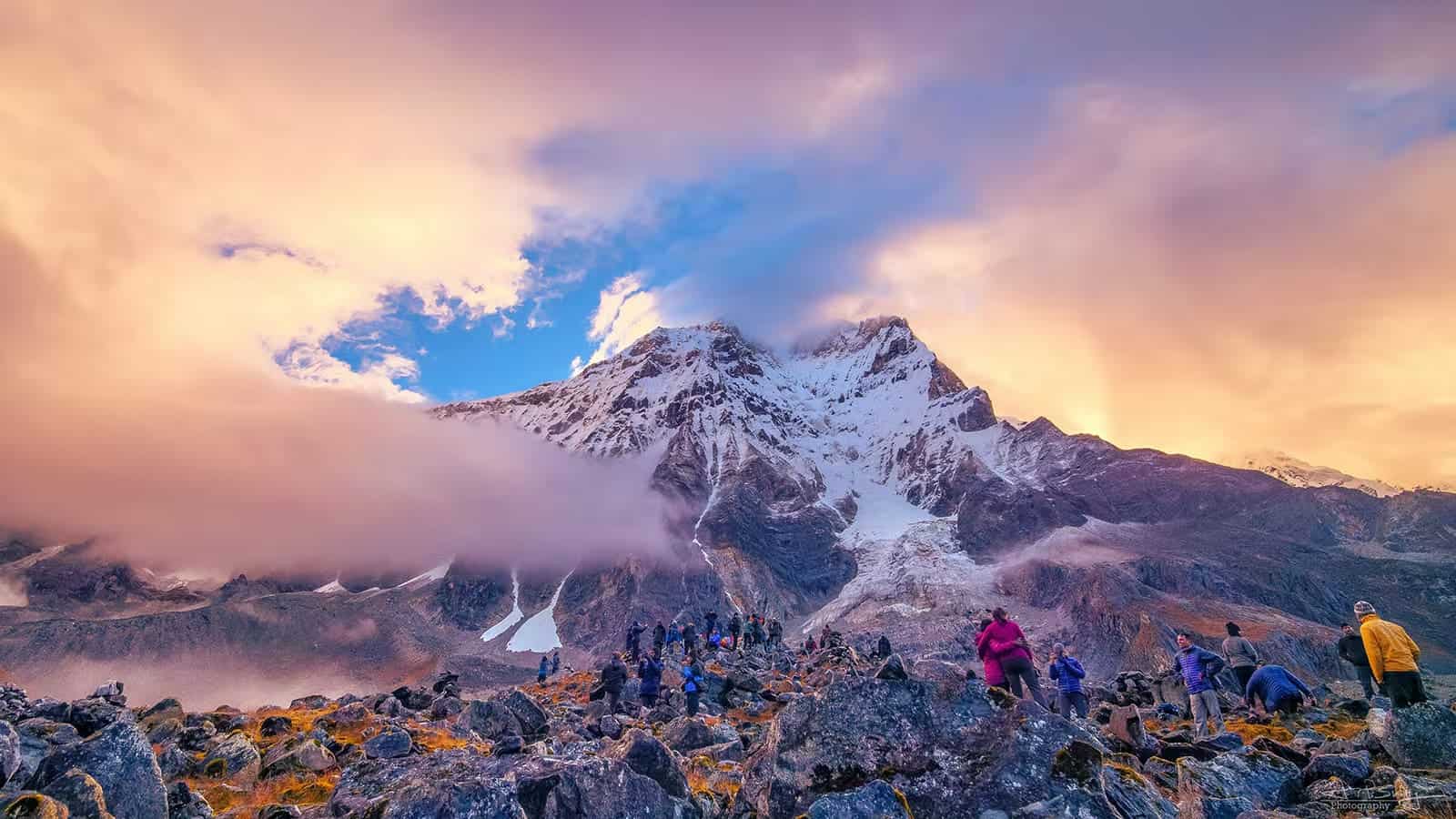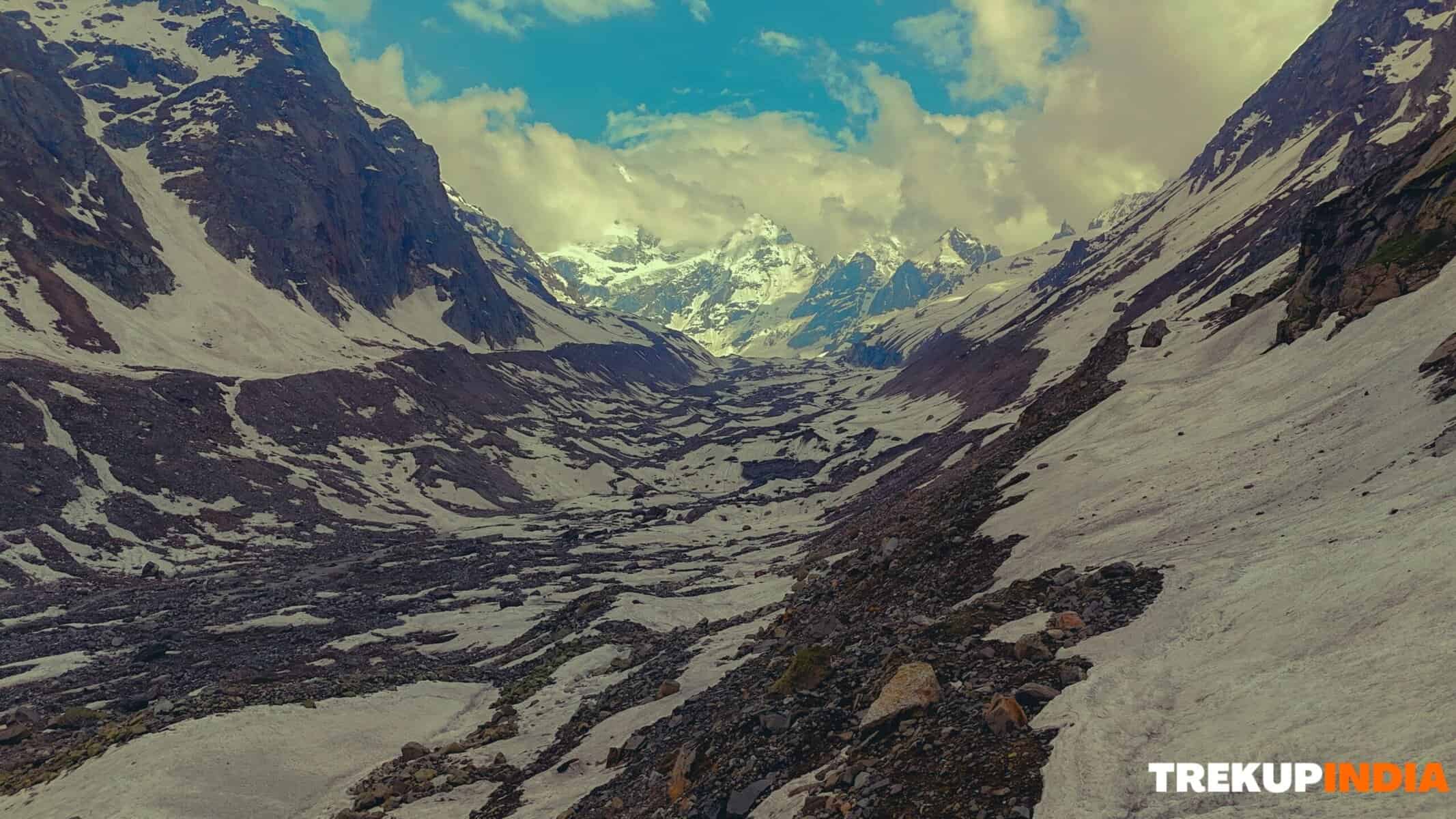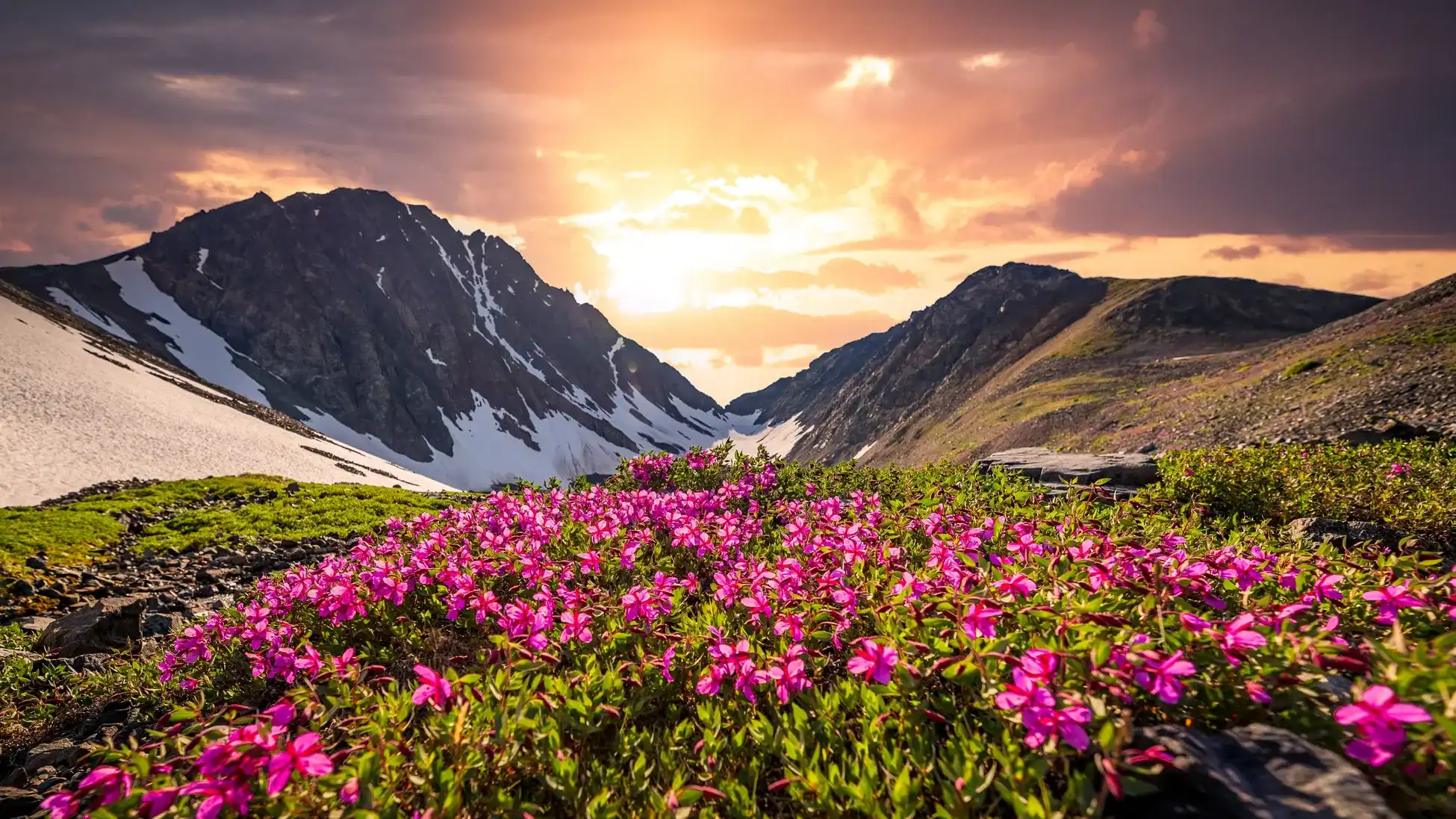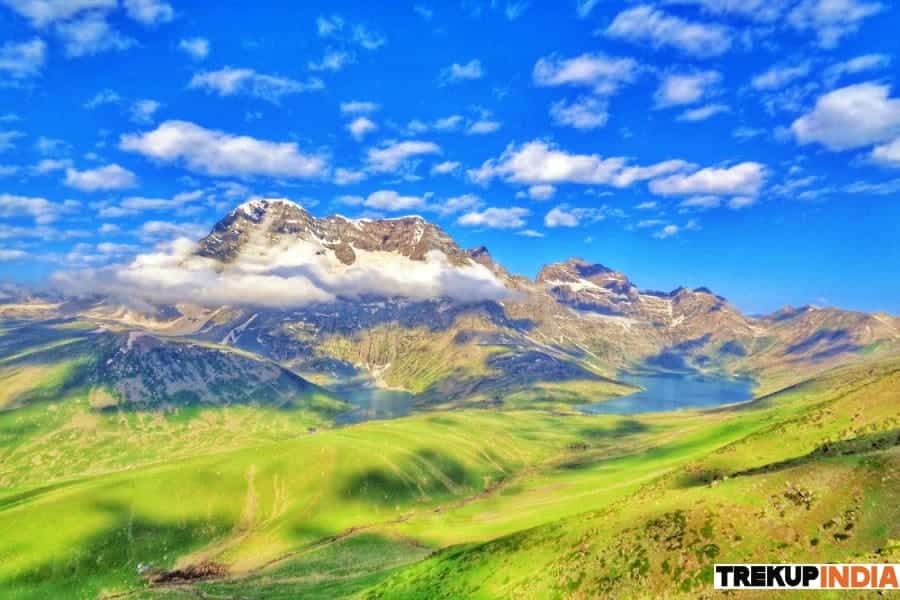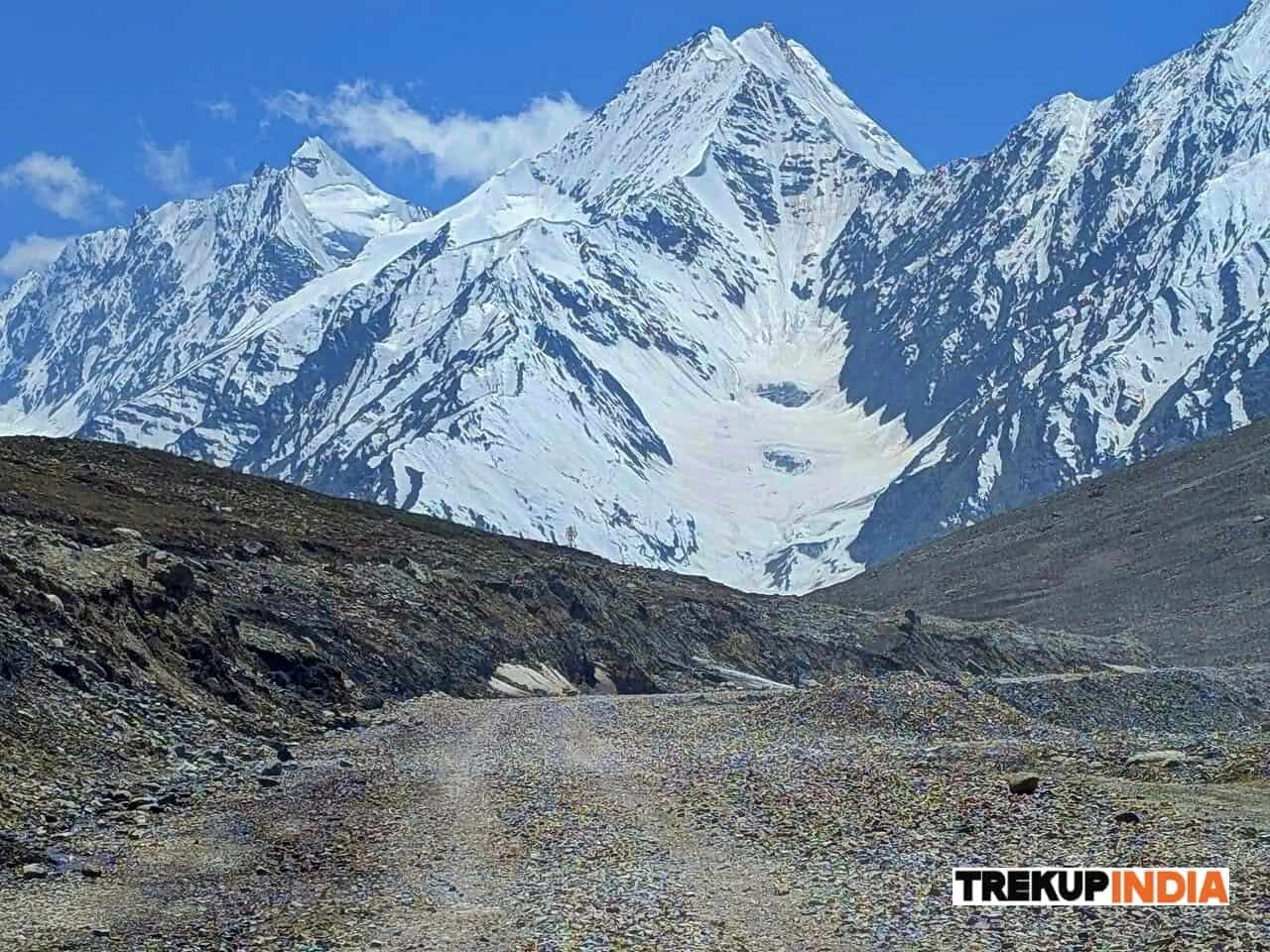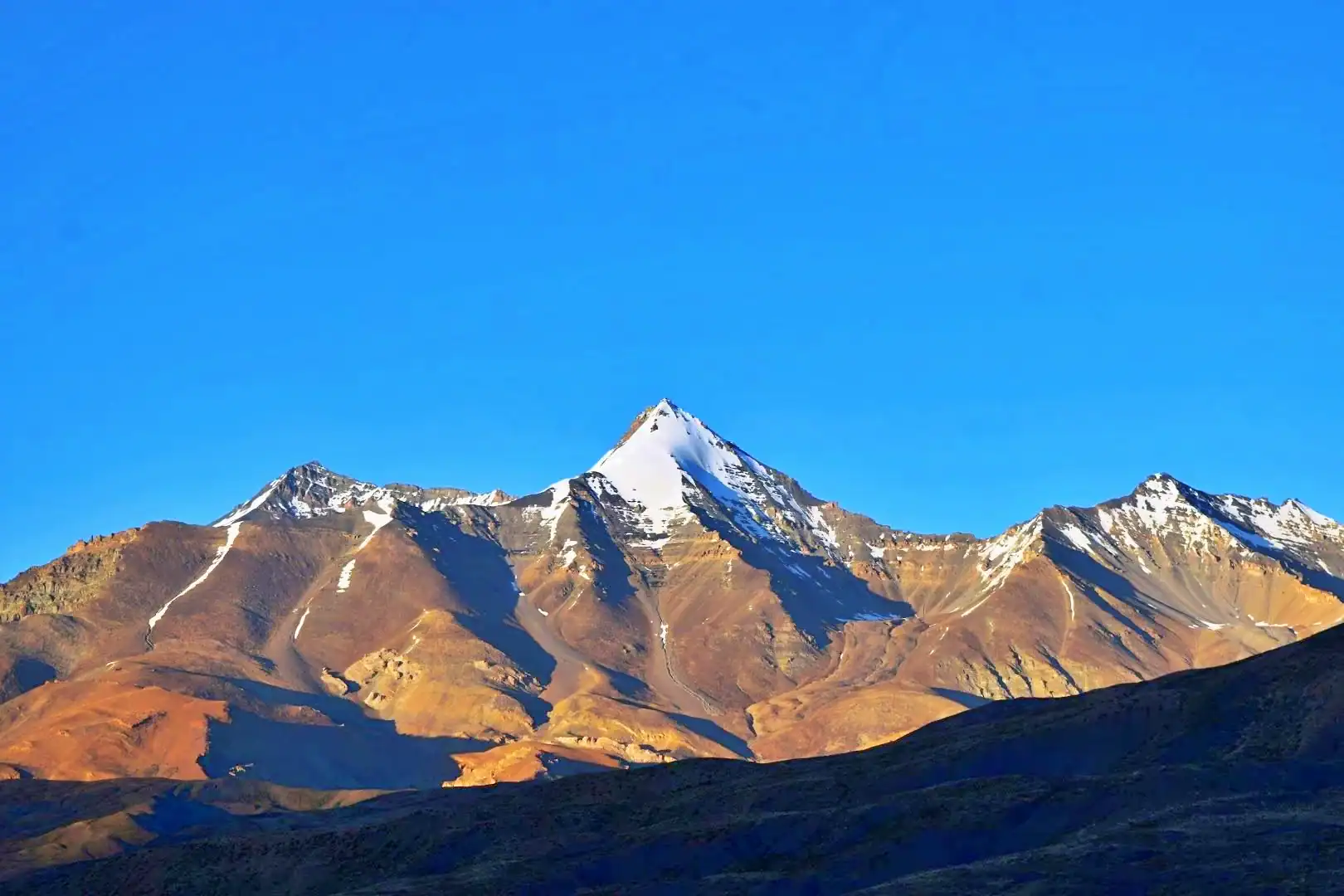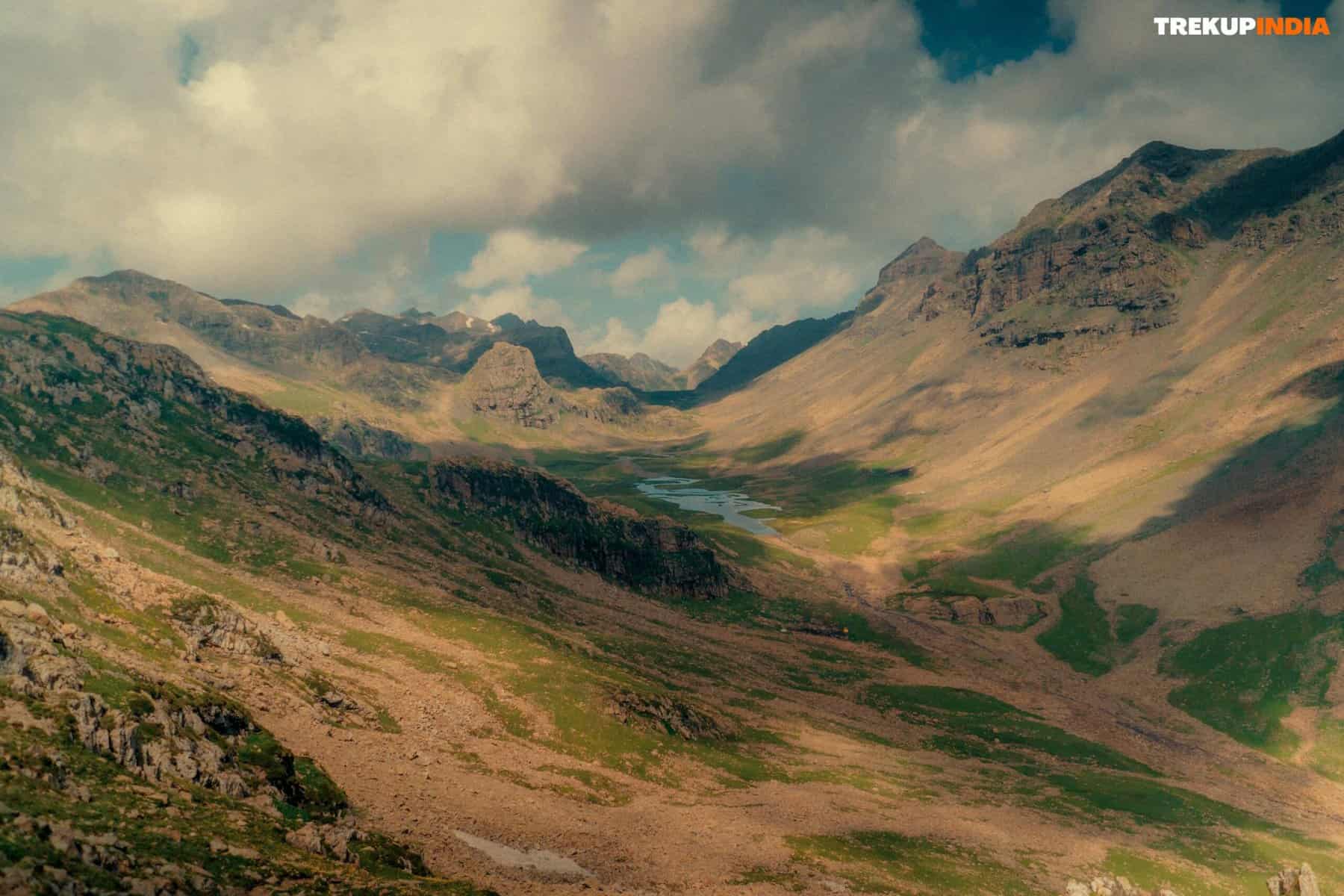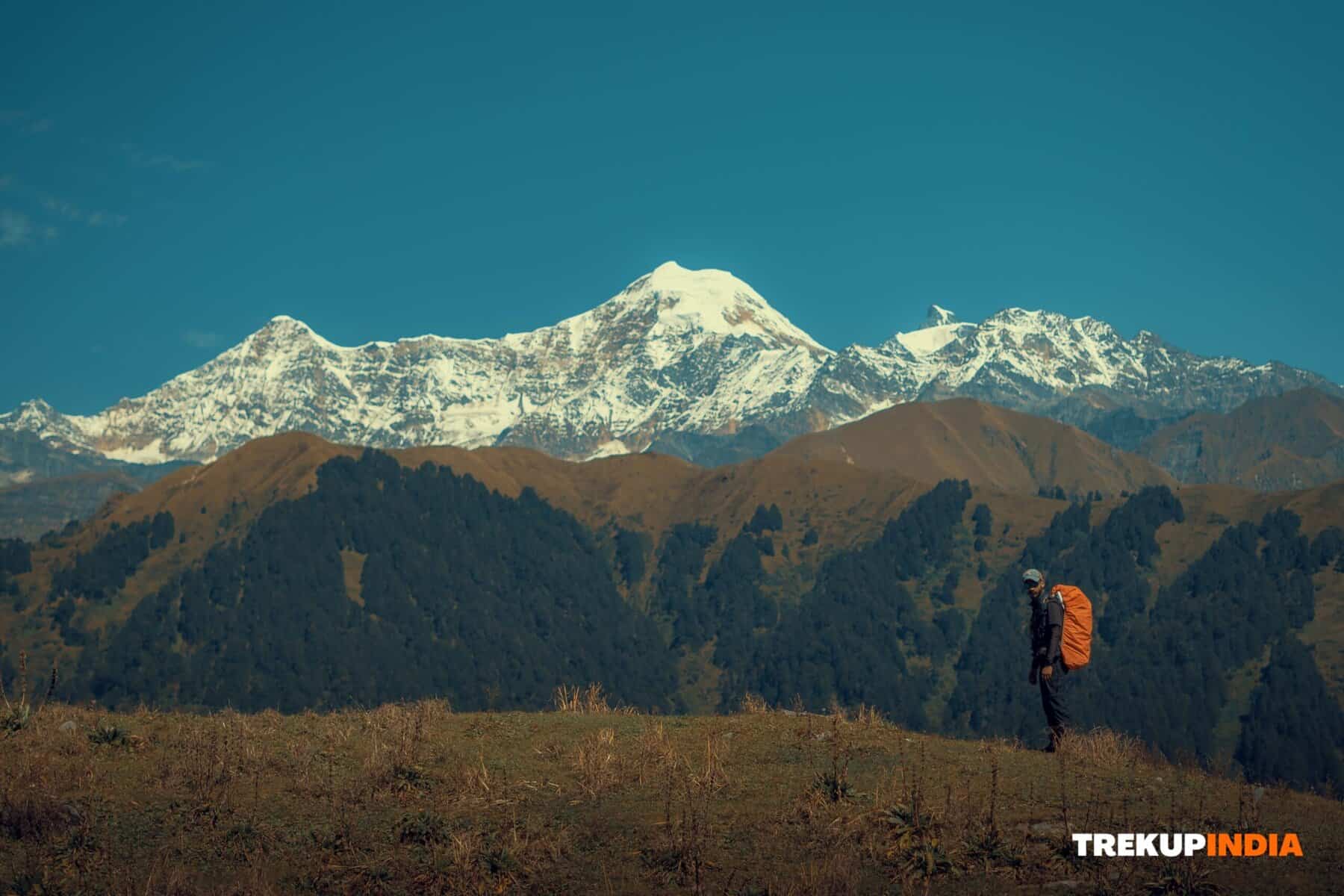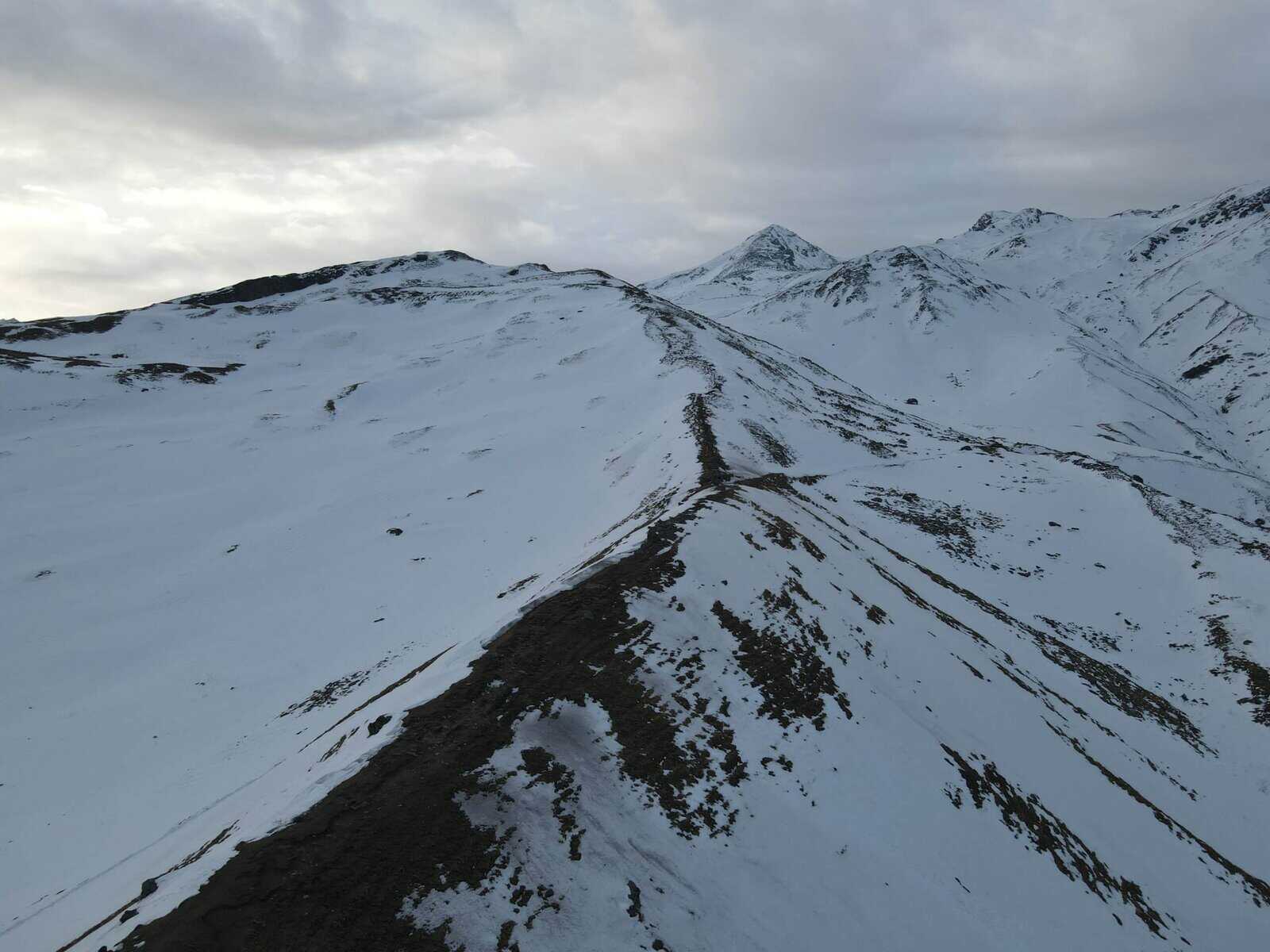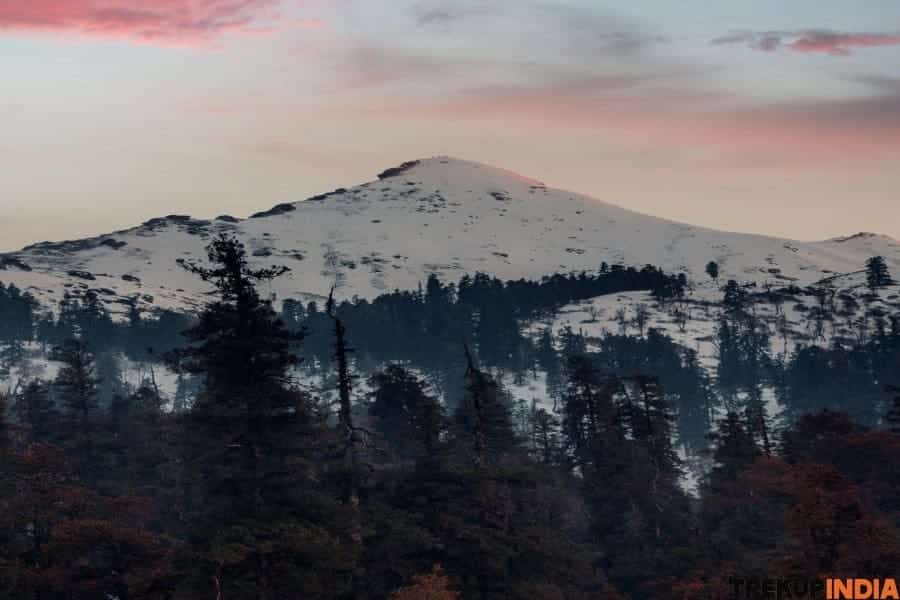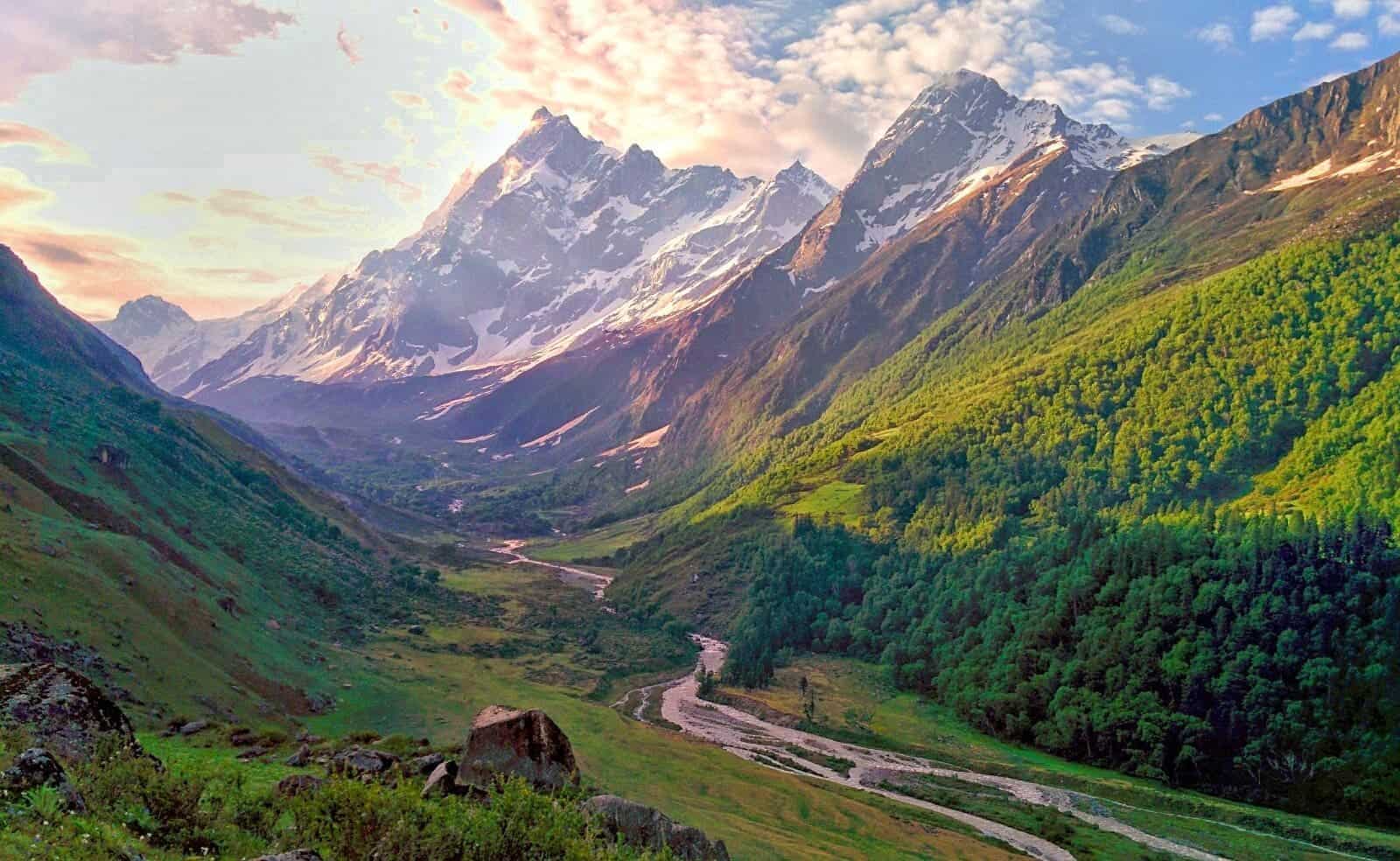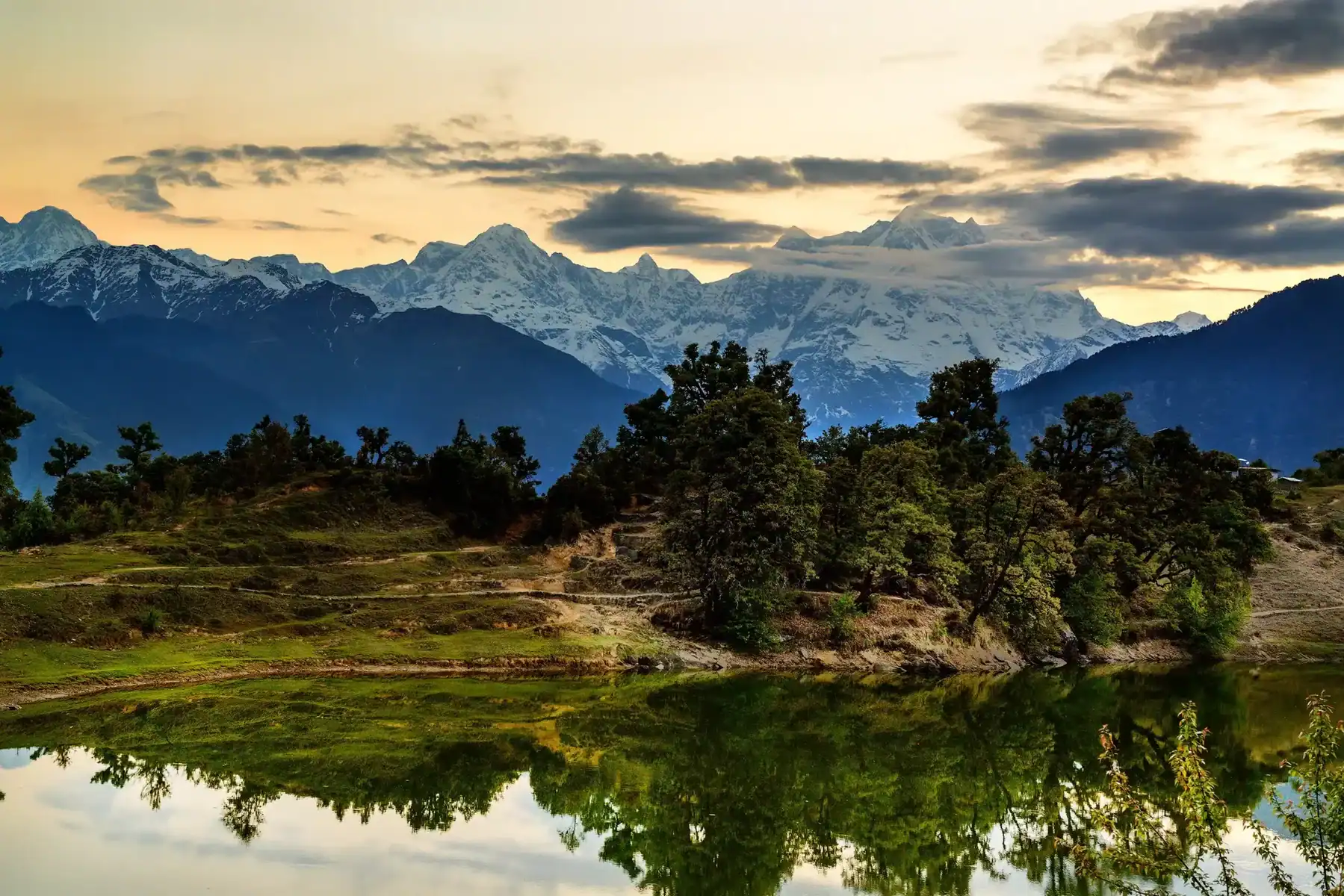Surkanda Devi Trek
Surkanda Devi Temple Trek
Surkanda Devi Temple Trek is situated at an elevation of 9,041 feet, in the beautiful area in Uttarakhand’s Tehri district. It is located near Unniyal Village and Dhanolti. This sacred shrine is one of the Shakti Peeths and is a simple but captivating design, with the god Surkanda Devi adorned in exquisite gowns of silk, and headpieces made of silver. The surrounding temples and temples provide panoramic views of the Himalayan ranges, the dense forest as well as a tranquil valley beneath.
The Surkanda Devi Temple trek begins in Dhanolti and follows a straight trail. You must first ascend steps before following an easy path with fencing along its valley edge to reach the summit of this hike, which offers beautiful panoramic views of its region and boasts incredible landscapes of dense forests and Himalayan mountains at the peak.
Surkanda Devi Temple’s design is truly captivating, boasting simple but striking architecture with god Marsarkanda Devi resplendent in exquisite silk clothing and silver headpieces. Visitors will also see statues of Lord Hanuman seated atop a lion in its grounds; Ganga Dussehra can be celebrated here from 1-10 Jyesththa month; Navaratri can also be observed here as an occasion of worship and celebration.
Surkanda Devi Trek is an accessible hike that is suitable for trekkers of all skill levels, from beginners to experinced trekkers.
Trekking is something we enjoy doing and would like to share it with our readers. To facilitate that goal, we’ve carefully documented Surkanda Devi Trek with care to enable individuals to undertake this trek independently.
This guide will provide all necessary information to be able to complete this Surkanda Devi Trek independently, starting with the highlights of the trail and route to the access point, accommodation as well as safety advice.
Best Time for Surkanda Devi Temple Trek
The ideal time to do the Surkanda Devi Teample Trek is typically during the months of October and April. Below is the full breakdown:
- October to April (Warm Months):
- Best Conditions: The skies are mostly clear, and temperatures are mild, which creates comfortable walking conditions.
- Panorama Views: The months of April and May offer fantastic views, allowing viewers to enjoy a 360-degree panorama of the Himalayas and the lush valley beneath.
- Accessibility: Trails are clean and well maintained as compared to monsoon time.
- Winter Months (December to February):
- Winter Wonderland: The landscape around the temple is usually covered in snow, creating a tranquil and enchanting atmosphere.
- Extra Careful: While the scenery is spectacular, the cold conditions and possible frozen patches of snow require proper equipment and meticulous preparation.
- Monsoon Season (June to September):
- Not recommended for: Heavy rains during the monsoon season can muddy trails and increase the likelihood of landslides. Also, fog and diminished visibility could hinder your enjoyment of nature.
Pick the best time that fits your trekking experience and your comfort in a variety of weather conditions. However, for many trekkers, the time from October through April has ideal conditions to ensure a safe and enjoyable trip.
Highlights of Surkanda Devi Temple Trek
- Surkanda Devi Temple is located in Dhanolti, Tehri district, Uttarakhand.
- Altitudine: Temple sits at 9,041 feet higher than the sea level.
- Scenic Views:The hike up to the temple is rewarding, with panoramic views of snow-covered Himalayan peaks, lush forests, and valley panoramas.
- Spiritual significance: As one of the 51 adored Shakti Peeths The temple is deeply rooted in Hindu mythology and recounts the story of Sati and the supernatural intervening of Shiva. Shiva.
- Trek Profile:
- Level of difficulty: moderate (suitable for both experienced and novice trekkers)
- The trail: A well-maintained path featuring concrete steps, fences on steep slopes, and occasional rest benches.
- Distance and Elevation: It’s approximately 2.5 km long. It rises from 8,192 feet up to 9,041 feet.
Surkanda Devi Temple Trek Detailed Trail Information
Here are the complete trail details of Surkanda Devi Temple Trek, breaking down each section and providing important information for a secure and pleasurable trip.
Trail Overview
- Complete Distance: About 2.5 miles (one-way)
- Gain in Elevation: From approximately 8,192 feet in the base and 9,041 feet when you reach the temple.
- Estimated Time of Use: 1.5 to 2 hours by foot (one-way)
The path is maintained and well-marked, made to help trekkers navigate the mix of concrete paths, natural steps, and beautiful forested sections that lead up to the temple of God.
Trail Segments & Key Features
1. Starting Point & Entrance
- Locality: The trek begins at Dhanolti which is easily identified by the unique red gate near the entry point to the trail.
- Initial Path:
- The trek begins on an elevated concrete slope, leading you to a valley of forested trees.
- The first section of the trail is well-paved with safety in mind, which makes it suitable for beginners who want to hike.
2. Steps and Inclined Paths, or Concrete Steps:
After entering, steps will provide an easier means of steadily ascending a hillside. Keeping them well maintained allows regularity when climbing.
Fenced Path:This route follows a steep trail with secure fencing on either side, offering extra safety during more challenging portions of the trail.
3. Ropeway & Optional Transport
- Ropeway Junction: Once midway has been reached, you will come upon the area where the ropeway begins its route.
- Ropeway Details: The length is approximately 502 meters. Capacity: Can hold more than 500 guests per hour
- Additional Uses: While the ropeway can be a viable option for people who wish to save energy, walking by foot is recommended in order to completely immerse yourself into the environment.
- Pony Rentals: In addition, some local companies provide pony rides for a variety of costs. The trek on foot lets you get every minute detail of the views from above as well as the beauty of nature.
4. Final Ascent & Temple Approach
- Rest Stops & Benches:
- When the path is close to its temple location, the trail turns into a gentle slope lined with carefully placed benches.
- These are great spots to take short breaks, hydrate, and take in scenic views.
- Local Store: Just 500 meters from the Surkanda Devi temple, you will find an store that sells important items like snacks & water. It’s a great location to get a refreshing drink or to replenish your food items.
- Temple Complex:
- The last stretch of the walk is a strenuous 100-meter walk that leads straight into the temple.
- BeforeBefore entering the temple, the temple will take you through a designated shoe storage facility where you will be obliged to take off shoes and belts made of leather in a gesture of reverence.
Trail Conditions & Safety Tips
- Well-Paved and Maintained:
- The entire route is identified and maintained to ensure that trekkers with less experience can walk the trails confidently.
- Elevation & Slope: You can expect a gradual increase in elevation and occasional sharp patches. The slow, steady pace is essential.
- Hydration: There are no sources of water along the trail, so it’s necessary to carry at least 3 litres of water per individual.
- Proper Footwear: Make sure you wear sturdy hiking shoes with adequate grip for handling the steps made of concrete, rough surfaces and possible rainy conditions.
- Weather Considerations: The path can be cold when you are at higher elevations and especially when the mornings are early or in winter. Wearing layers is recommended.
- Emergency Preparedness:
- Have a first-aid kit in a compact size.
- Check that your smartphone is charged to capacity and has a good signal. Network coverage is usually possible, but it’s not always guaranteed for all areas on the trails.
Surkanda Devi Trek offers a mix of cultural immersion and nature’s beauty. It takes the visitor on well-designed trails leading to an important spiritual location. Through its blend of modern amenities (like ropeways) and nature-based challenges, The trek has been designed to be accessible while rewarding those who opt to take a walk at every step. When you’re prepared–especially regarregarde proper equipment, hydration and the right pace–you will be able to fully enjoy the breathtaking views and peaceful surrousurroundingsawait you in the temple.
How to Reach For Surkanda Devi Temple Trek
This is how you can get to Surkanda Devi Temple Trek :-
Step 1: Arriving in the Region
- By air: Fly to Dehradun Airport, which is located approximately 97km away from The Surkanda Devi base. When you arrive at the airport, you are able to employ a taxi service or take the local bus.
- by train: The Dehradun Railway Station is located 67 kilometers away, and it connects you with important cities. From Dehradun, you can arrange to hire a taxi or bus that goes to Dhanolti/Mussoorie.
Step 2: From Dehradun to the Trek Base
- By Road, the Surkanda Devi Trek’s starting point is Dhanolti , About 65 kilometres from Dehradun.
- Private Vehicle or Taxi: The average time for a direct route is about 2 hours. It all depends on road and traffic conditions.
- Public Bus:
- Get a bus ticket to Dehradun from Dehradun to Mussoorie. Buses operate frequently, and especially during the early morning.
- From Mussoorie Local buses and shared taxis travel towards Dhanolti. They typically run between 6:45 am between 7:45 and 6:45 am, and prices range from 100 to 150 per person.
Step 3: Reaching the Trek Starting Point
- Then, in Dhanolti: When you reach Dhanolti ,take local directions or inquire for directions to the entry point tarked with the distinct red gate,. Thisis also the officially recognized starting point for StheSurkanda Devi Trek. The area is popular locally , which is why guides and taxi drivers acandirect you to Dhanolti.
Note: It’s an excellent idea to check the route you’re taking on Google Maps or with local transportation providers before time. It will ensure you get current information regarding roads and bus schedules.
Follow these instructions by following these steps. You will be able to easily reach the starting point of the Surkanda Devi Trek and prepare for a rewarding trip towards one of the most sacred Shakti Peeths. Enjoy your trek!
Essentials for the Surkanda Devi Trek
- A well-stocked First Aid kit, including:
- Scissors
- Band-aids (regular and waterproof)
- Analgesic spray (Relispray, Volini, etc.)
- Antiseptic Liquid (Savlon, Dettol, etc.)
- Antiseptic powder (Povidone-Iodine-based powders like Cipladine, Savlon, etc.)
- Cotton roll and bandage
- Crepe Bandage
- 1-inch wide medical tape (paper or cloth)
- Micropore tape
- Tablets for motion sickness (Avomine) and acidity (Gelusil, Digene, etc.)
- Mild pain relief tablet (Crocin)
- Identity Card
- Cap, scarf, bandana, and sunglasses
- At least two litres of water
- Lemon, salt, or an electrolyte drink (Electoral/Gatorade/Glucon D, etc.)
- High-calorie snacks (nuts, dry fruits, home-baked cake, etc.)
- Safety pins, rubber bands, and a whistle (useful in emergencies)
- Quick-drying T-shirts (preferable over cotton tees)
- Poncho (only during monsoons)
- Plastic sheet to wrap electronic devices (only during monsoons)
- Sunscreen (SPF 50+)
- Trekking poles (optional)
Remember to always seek advice from a physician before consuming any medication.
Dates For Upcoming Treks
Want To Trek Like Pro?
Basically, watch these videos if you want to trek the same way professional trekkers do and make your skills better. These videos contain useful tips and techniques to further improve your trekking skills itself. These videos actually help both new and experienced trekkers improve their trekking skills. These videos definitely provide useful tips that make your trek better. We are seeing that these videos by Trekup India experts will only help you make your trekking skills better.







Know Everything About Acute Mountain Sickness
Acute Mountain Sickness occurs when people trek to high altitudes above 8,000 feet. This condition itself develops further due to reduced oxygen levels at such heights. Basically, as you go higher up, the air pressure and oxygen levels decrease, which causes the same problem. Acute Mountain Sickness surely causes headache, nausea, vomiting, and dizziness in affected persons. Moreover, peoples also experience difficulty in sleeping during this condition. To avoid mountain sickness, you should actually trek up slowly to higher altitudes. To learn further about this condition itself, watch the videos by Trekup India.


